
















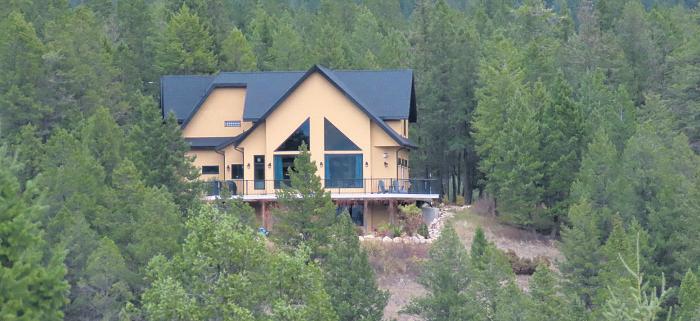







Vol. 20/Issue 25 Your Weekly Source for News and Events June 22, 2023 Serving the Upper Columbia Valley including Akisq’nuk and Shuswap First Nations, Spillimacheen, Brisco, Edgewater, Radium, Invermere, Windermere, Fairmont and Canal Flats FREE The Columbia Valley P IONEER BUDGET WOE JOIN THE DAY DAY IN THE LIFE FULL OF PRIDE The Pride Festival at Pothole Park in Invermere on June 17 was chock full of inclusive activities and events for young and old. See more photos on page 8
3 14-19 26-27 SEAN & PAUL ROGGEMAN P e r s o n a l R e a l E s t a t e C o r p o r a t i o n s Your listing on the front page with **Incredible opportunity** This spectacu ar 4000+ SQFT home and 0.344 Acre parcel of land provide privacy + views AND a central location, a magical (and very rare) combination Oversized garage, recently renovated modern kitchen, newer roof/furnace and more! 3407 CROOKED TREE PLACE $1,095,000 250-341-5300 C o n n e c t i n g e x c e p t i o n a l p e o p l e w i t h e x c e p t i o n a l p r o p e r t i e s f o r 1 6 + Y e a r s - T h a n k y o u ! 250-341-5445 Rockies West Realty Independently owned and operated Connect with us : Sean@rockieswest com www.roggeman.ca WWW ROGGEMAN CA #9 519 13TH ST- SILVERSTONE PLACE $379,000 Sold at full list price this beautiful 2 bd/2 bath downtown Invermere condo comes complete with dedicated 110 sqft storage bay, ski locker + games room access.List $379000 > Sale Price $379,000 SOLD WOW 250 •341• 6044 | 250•341•1395 PERSONAL REAL ESTATE CORPORATION G e off Hi l l Personal Real Estate Corporation Fair Realty 250-341-7600 www.Rockies.RealEstate Serving Invermere, Panorama and the entire Columbia Valley
Photo by Alex Crawford
Rain in recent weeks has meant a lot of muddy runoff coming down from local mountains. In top photo, it appears Toby Creek is serving up chocolate milk, or is that Kahlua, into the Columbia River? At right, it makes a burst of colour on an otherwise grey day, but the Scotch thistle (cotton thistle, Onopordum acanthium) is designated as a ‘regional noxious weed’ by the BC Weed Control Act, as well as a ‘management species’ by the BC Provincial Priority Invasive Species List, and is on the East Kootenay Priority Watchlist. This plant creates dense stands that are difficult for humans and animals to walk through.









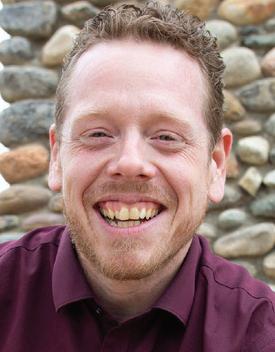















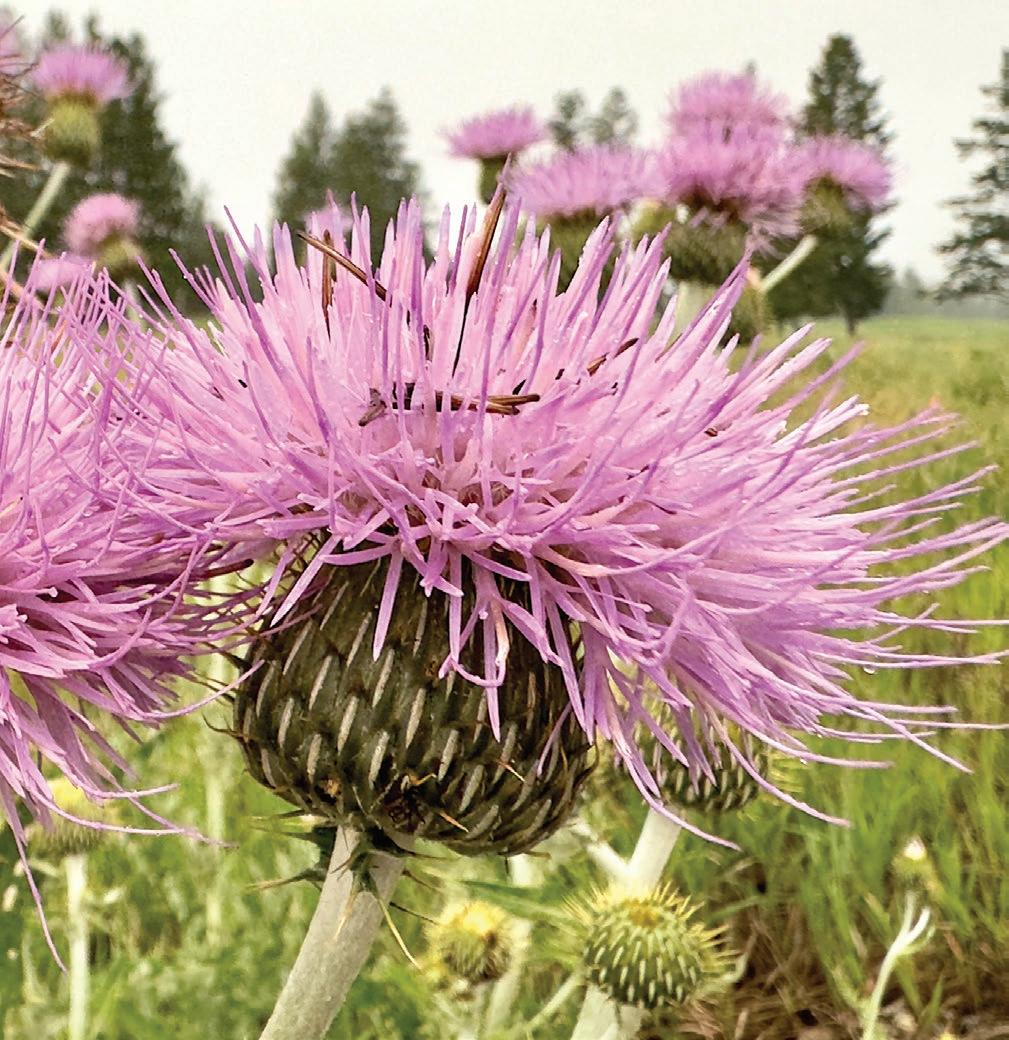

2 • The Columbia Valley Pioneer June 22, 2023 VALLEY
VIEWS
Photos by Ryan Watmough Recycle? Yes or no? Get the BC ReCYClepedia app Recycling council of B.c. MeMBeR www.rcbc.ca Recycling questions? BC RECYCLING HOTLINE 604-732-9253 1-800-667-4321 Recycling council of B.c. MeMBeR BC RECYCLEp www.rcbc.ca to ouncil of B. Where to recycle? ouncil of B.c. MeMBeR Check the BC RECYCLEpEdia 604-RECYCLE (732-9253) 1-800-667-4321 Check the BC RECYCLEpEdia www.rcbc.ca Can this be recycled? Recycling council of B.c. MeMBeR This week ’s winner is… Bonita Hogan Many, many more draws will continue through 2023. GREAT GAS GIVEAWAY MARKET CROSS ROADS O P E N 2 4 H O U R S / DAY 9 4 O C TA N E S U P R E M E P L U S F U E L N O W AVA I L A B L E ! Te mp er ed Gl ass for indoor or outdoor railings Custom fitted tempered glass for indoor or outdoor ilings. Prompt, professional service with guaranteed workmanship #3, 109 Industrial #2, Invermere B.C. 250-342-3659 • Fax: 250-342-3620 www.invermereglass.com Serving Residential and Commercial Clients Bruno’s Plumbing Service Mike Sylvestre 250.342.5105 brunosplumbing@shaw.ca Serving The Columbia Valley We now service drains Br yan Gibb REALTOR® hello@br yangibb ca 250-341-5263 Geoff Hill Personal Real Estate Corp connect@geoffhill ca 250-341-7600 F A I R R E A L T Y EnerGuide rating number 46. Energy assessed in June 2023 as using 46% less energy than a typical new home built today 1918 Park Dr Windermere, BC $1,399,900 MLS# 2470476 Super Efficient! EnerGuide Rated!
Paving budget to pay for fish

 By Steve Hubrecht steve@columbiavalleypioneer
By Steve Hubrecht steve@columbiavalleypioneer
The long-awaited Abel Creek culvert will finally be installed this summer. But in a series of unfortunate bureaucratic twists, the District of Invermere is no longer eligible for a grant to offset the cost of the very expensive project, leaving the municipality to pick up far more of the nearly three-quarter million dollar price tag than it had hoped to.
It’s great news for salmon, who have been unable to migrate up Abel Creek for years because the box culvert is in such disrepair. But perhaps not such welcome news for those wanting all the potholes in Invermere filled. With precious few other options, the district will take more than half a million dollars out of its 2023 paving budget to instead pay for the culvert. That’s bound to leave more than a few disgruntled residents, given that many stretches of road in Invermere are badly potholed and in clear need of better paving.
to COVID-19 resilience infrastructure funding.
Here’s where the bureaucratic twists begin. The district was given a ministerial order from the federal government two years ago legally requiring that the culvert be completed in 2023. But because installing the culvert impacts fish, the in-water construction work can only happen in a very tight window of time, between July 16 and August 30, in any given year.
The district applied for the grant and has been waiting on pins and needles to hear back about it for a year and a half now, but alas with no answer. So earlier this spring, to make sure the work would be done this year, as per the ministerial order, the district awarded the contract to install the culvert. Recently the district learned that because it has already signed the contract for the work, the culvert is now no longer eligible for the grant funding.
The district had already set aside $186,000 from its environmental reserve fund to pay for the culvert, but with grant money suddenly no longer a possibility, it needed to pull the rest of the $700,000 for the culvert from somewhere else.


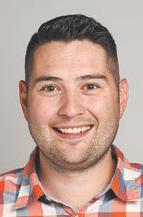
to be this spring. But that contract being signed means we are now ineligible for the grant . . . it’s BS. It sucks. I don’t think we should take it lying down.”
Taft went on to add that once upon a time the section of Westside Road that includes the Abel Creek culvert was outside the district boundaries. When Invermere expanded its boundaries to include
what is now the CastleRock subdivision, it also assumed responsibility for that part of Westside Road, and consequently for the culvert.
“It’s something to be aware of in any future discussions about boundary expansion . . . there are opportunities and benefits, yes, but there are also risks. You can inherit liabilities,” said Taft.
Paving (or a lack thereof) has been the source of much complaining in Invermere this spring. The biggest target of that grumbling — a part of 13th Avenue and 15 Street that has been gravel for nearly a year — is the responsibility not of the district, but of contractor Marwest Industries Ltd, as part of the sewer and water upgrades it did for Invermere last summer. But plenty of other parts of the Invermere road system are up to the municipality to fix. Some of those scheduled to be done this year will now need to wait as a total of $573,310 will come out of Invermere’s paving budget to pay for the culvert. Prior to the reallocation, the paving budget was more than $1.3 million. With culvert money gone, $727,515 is now left to fix roads.
The culvert has needed fixing for a very long time, but the district has been seeking grant funding to pay for the bulk of the $700,000 project. The cost is much higher than that of a typical culvert, because Abel Creek is an important fish habitat. Consequently, an additional $250,000 above and beyond the initially projected $450,000 is needed to pay for engineering oversight, environmental oversight, pre and post environmental monitoring, and geotechnical testing. The grant the district applied for related
Invermere staff looked at using money from the environmental reserve fund or the capital works fund. But neither of those funds has enough to cover the extra $573,000. Besides, draining those funds would leave the district unable to pay for planned environmental and capital projects that are in the works.

At last week’s Invermere council meeting, councillors expressed frustration at getting tripped up in the tangled circumstances, saying they are aware the fish are important, but adding the federal government’s incredibly slow response to the grant application now means much-needed paving won’t happen.
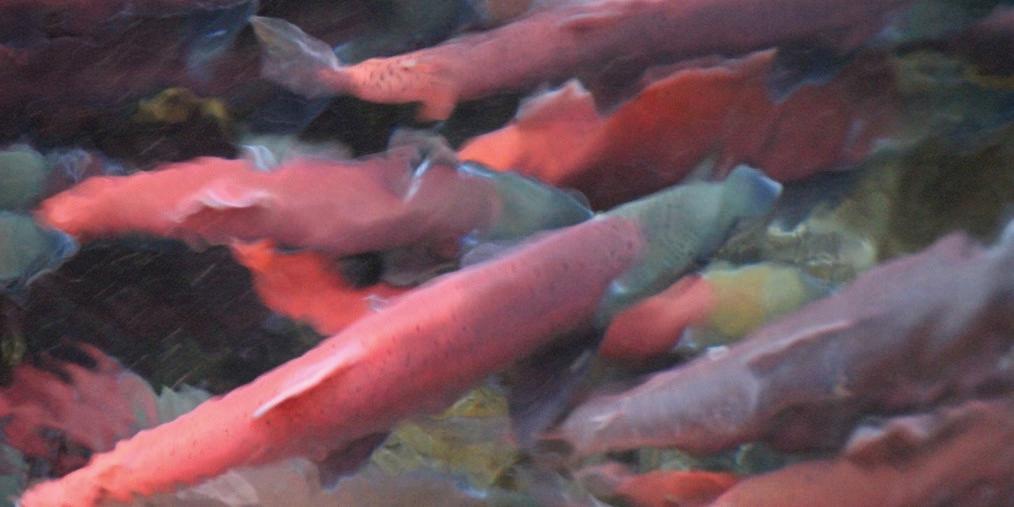
“We don’t want to take that money out of the paving program, but we have to. We don’t really have a choice,” said Invermere Mayor Al Miller.


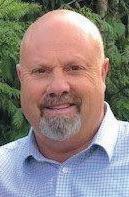


Failure to follow the ministerial order could see the district taken to court by the federal government.
Councillor Gerry Taft was deeply upset. “I can’t even explain to taxpayers why this culvert costs $700,000. I don’t understand . . . if every culvert along that road (Westside Road) is going to need to be fixed and is going to cost $700,000, we will have nothing left for any kind of paving . . . it’s extremely frustrating. We should be getting mad about this,” seethed Taft. “I wish I could vote against this. But our hands are tied. We are being boxed into a corner . . . the ministerial order means the work must be done. The (short, six-week) construction window means the contract (for culvert installation) had


June 22, 2023 The Columbia Valley Pioneer • 3
“It’s BS. It sucks. I don’t think we should take it lying down.”
Gerry Taft, Invermere councillor
Kokanee salmon (shown here) and other fish will at last be able to migrate up Abel Creek, when a culvert that has needed fixing for years finally gets replaced this summer.
VALLEY NEWS
Photo by Joanne MacQuarrie
culvert 1214 -7th Avenue, Invermere Ph: 250-341-6044 • realestateinvermere.c a F R E E H O M E E VA LUAT I O N S B E R N I E R AV E N 250-342-7415 C H R I S R AV E N 250-409-9323 D O R A N C A I N 250-342-1629 S T E V E H E N D E R S O N 250-341-5128 DAV E J E N K I N S 250-341-7344 J A N K L I M E K 250-342-1195 J E F F PAC H O LU K 250-341-7800 C H A R LOT T E M A R S H A L L 250-899-9912 PAU L G L A S S F O R D 250-341-1395 Where Real Estate Happens™ G R A N T CO S T E L LO 250-342-1052 DAV E M CG R AT H 250-341-1967 G A I L D U C H N YC H 250-421-3102
A group of overdue hikers was rescued from Bugaboo Provincial Park on June. 18.


Columbia Valley Search and Rescue (CVSAR) reported they were called out to help find “overdue hikers” in the park.


A team of CVSAR members responded with the















help of Coldstream Helicopters to locate the hikers who had spent the night in the wilderness after getting “lost in a whiteout.” No injuries were reported.






Search officials are reminding people that cool and wet spring weather have returned to the mountains, bringing new snow and challenging travel conditions.
Before heading out remember the three T’s - trip planning, training and taking the essentials.

4 • The Columbia Valley Pioneer June 22, 2023 N E WS P A P E R For all your advertising needs, call Jamie at 250-341-6299 Columbia Valley Search and Rescue utilized their training to help find a group of overdue hikers in Bugaboo Provincial Park on June. 18. Photos courtesy of CVSAR Columbia
Valley Pioneer Staff
CVSAR finds overdue hikers invermere.bc.libraries.coop gnivreS t eh oC l u mb i a Vall e y U P COM I N G EV E NTS Write O n! Writer ’s group. Meeting June 28th at 6 pm at the librar y or on Zoom. Email publiclibrar y@invermere.net for more info SECURITY SECURITY 250-688-HAWK Invermere & Surrounding Areas Licensed & Insured w w w . v a l l e y h a w k . c o m • Uniformed Guards • Mobile Patrol • Alarm Response • Property Checks Est. 2005 Sunday, June 25th Historic K2 Ranch on Westside Rd From Invermere: 12 3 km south of JA Laird School From Fairmont: West on Hwy 93/95; then north 13.3 km on Westside Rd 9:00 am Register & Check-in 10:00 am Barn Tour 10:30 am Hike & Walk Starts $30 / Adult, $5 / Child (12 and under) Join us for a leisurely walk or longer guided hike Bring-your-own picnic lunch and water bottle Walk in Memory Walk in Support DOGS ON LEASH WELCOME EVERYONE WELCOME RAIN OR SHINE 8h ANNUAL Walk & Hike for Hospice SRL K2 Ranch Register Online: HospiceSocietyCV com Thank you to all our generous sponsors who make this event possible Please visit our website hospicesocietycv com to view. Special Thanks to ranch owners Bob & Barb Shaunessy for nviting us to hike at K2 Ranch 250-341-4002 w w w.copperpointresor t.com O p e n T h u rs d ays - M o n d ays B re a k fa s t a n d D i n n e r S u n d a y : P r i m e R i b D i n n e r M o n d a y : B u r g e r w i t h D r a f t B e e r o r W i n e T h u r s d a y - S a t u r d a y : C h e f ’s S p e c i a l We e k l y S p e c i a l s ( D i n e - i n O n l y )
Residents want brakes put on speeding
By Steve Hubrecht steve@columbiavalleypioneer.com


Speeding was a hot topic of discussion during last week’s Invermere council meeting, with two separate parties beseeching council members to put the brakes on dangerous drivers in two different parts of the district.
Pineridge residents David and Diane Hunt pressed councillors during the June 13 meeting about speeding dump trucks and other too-fast vehicles coming into and out of the westernmost edge of town on Pineridge Mountain Run.
At the same time Buzz Harmsworth, who lives south of Walker’s Lane, raised concerns about vehicles zooming into and out of the southernmost edge of town on Westside Road.
The Hunts want the district to install two speed bumps along Pineridge Mountain Run to slow the zippy motorists.
David Hunt noted there are two gravel pits further down Pineridge Mountain Run, outside the District of Invermere boundaries, but dump trucks full of gravel (or going to get gravel) from these pits must drive through town.
Some of them are doing so “at excessive speeds,” he said, adding with a building boom underway in Pineridge there is a lot of home construction related traffic as well, some of which is also driving far too fast. On top of that, many mountain bikers, hikers, trail runners and dog walkers use the road to access nearby trail systems, he added.
“It’s a dangerous situation for residents, for pedestrians, for the hikers, bikers and dog walkers. Especially children,” said Hunt. He recalled raising the issue a few years ago, but nothing has been done. “We need speed bumps because they work . . . I know there’s controversy because people hate to slow down. But there is a reason they need to slow down,” he implored.
Diane Hunt chimed in that it is very clear that many vehicles are moving much faster than 60 kilometres per hour through a residential area, never mind the posted 50 kilometres per hour speed limit. “It’s not just the dump trucks, there is all kinds of traffic. And there are more and
more pedestrians there all the time,” she said.
Harmsworth then explained the same thing happens on the south end of town, saying drivers coming up Westside Road into town often ignore the fact that they’ve just entered a residential area with a slower speed limit, and instead continue to travel at highway-like speeds. He pointed out the danger in this, noting that not long after entering Invermere from the south drivers on Westside Road (which becomes 13th Avenue) go past a neighbourhood playground, past homes with back decks almost fronting right onto the street, and past first one school zone and then another.
The school zones and the stretch of road by the playground have speed limits of 30 kilometres per hour, while for the rest of Westside Road (at least the part within Invermere boundaries) and 13th Avenue the limit is 50 kilometres per hour.
“Is there no way to make it 30 kilometres per hour the whole way (along the street), year round?” asked Harmsworth.

Most council members were quick to agree there is a danger, but were divided on what to do about it.
Councillor Kayja Becker agreed with Harmsworth’s suggestion. “It’s 50 (kilometres per hour), then 30, then 50, then 30. Some drivers get infuriated by constant changes. Why not have a consistent speed right through?” asked Becker, adding the school zones are not marked as clearly as they ought to be.
“You are always wondering, when is it (the school zone) over? When I feel like it is?” she said.


Invermere Mayor Al Miller was clear that “we don’t want to see somebody get hit” but wasn’t sure making the speed limit 30 kilometres per hour along the entire length of 13th Avenue and the part of Westside Road within Invermere boundaries was a good idea. He noted this was a long way for drivers to move quite slowly.
“Frustration would build,” said Miller.


Becker countered that, frustrated or not, drivers rush, especially on a street with two school zones and a playground.

“What kind of rat-race city do we live in that you need to speed? Why can’t you go 30 kilometres the whole way? It will


add about two minutes to your drive. Just enjoy the view,” she said.
Councillor Gerry Taft agreed with Miller that a 30 kilometre per hour speed limit might not do much good. “People going a little bit over the speed limit is not necessarily an issue. But you do have an issue when you have people going 70 kilometres or 80 kilometres. And that does happen there. But will a slower speed limit change that?” asked Taft. He suggested people who drive that fast clearly have no regard for safety, and will likely continue to blatantly ignore the speed limit, whether it’s a mix of 50 and 30 kilometres per hour or whether it’s 30 kilometres per hour the whole way through.
Corporate Officer Kindry Luyendyk told council members that Invermere bylaw officer Mark Topliff has talked to the dump truck drivers entering town from the west in the past.
Luyendyk said Topliff can do it again, although she wasn’t sure the drivers would listen to him. Still, she said, even if the drivers don’t listen, it could be a useful exercise, since the district can start to gather information and document the issue.
The Pioneer reached out to the Columbia Valley RCMP, who explained speeding on Pineridge Mountain Run and Westside Road is not necessarily much different than speeding in other parts of the Columbia Valley.
June 22, 2023 The Columbia Valley Pioneer • 5
40% OFF SATURDAY, JULY 1 CANADA DAY SALE 1 DAY ONLY ALE EXCLUDES: GOLF BALLS HEADWEAR FOOTWEAR CLUBS AND GLOVES R I V E R S I D E G O L F P R O S H O P O N L Y Pool Update We are excited to announce that we are OPEN TO THE PUBLIC HOURS: 8 AM - 10 PM Single Entry: $16 Day Pass: $24 Family Single Entry: $50 Family Day Pass: $70 RV Guest Day Pass: $19 RV Family Day Pass: $56 Late Night Swim (8:30pm-10:00pm) $8 CELEBRATE and at Mulligans 8:30 - 11 PM MUSIC IN THE PARK ROCKINOMIX 2-5 PM Come and play 18-holes of golf w/cart at the beautiful Copper Point Course, plus enjoy full use of the driving range for $70. All proceeds from the day will be used by the Lake Windermere District Lions Club for Summit Trail Makers, local citizen medical needs and Crossroads Ballpark Upgrades. To book a ‘Charity Golf Day’ tee time call 250.341.3392 or 1.877.418.4653 Lake Windermere District Lions Club 21st Annual Copper Point Course TEE TIMES FROM 7:00AM - 4:00PM MONDAY JULY 10, 2023 CHARITY GOLF DAY Thank you for helping the Lions help the community!
Officer did right thing
In the old days (oh, no, here we go again), you had the utmost respect for your elders, particularly the authorities.
Giving a grumpy senior the finger was one thing, but flipping the bird to a police officer was a grievous act, and heaven forbid if your father found out, which he always did.
Fast forward to May 9, 2023 in Ottawa where a student on a bus allegedly flashed this rude gesture to a cop, who pulled the vehicle over and scolded the lad in front of his peers. The officer subsequently reported the boy to the school principal.
Unfortunately for the officer, a human rights lawyer witnessed the incident and . . . you know where this is going. She cried wolf and filed a complaint, as did the child’s father. Now, taxpayer’s money is being used to investigate the matter, which the lawyer claims was an abuse of power and a violation of trust (by calling out the poor boy in front of his friends). She reported that the officer threatened to detain the kid and place him in the police cruiser. For this, she wants a public apology. Get out the bleeding-heart violins.
Where did our society go wrong when police can’t even admonish a child for disrespecting them?
Giving someone the finger is not a crime. In fact, a Quebec judge ruled in March that this uncivil, impolite gesture is a “God-given, Charter-enshrined right” belonging to every Canadian. Really? Condoning this type of behaviour is not what we want our children to learn. Whatever happened to teaching our youth a little respect and a pocketful of morals?
Strange how all of the backlash was focused on the police officer’s actions and not the student’s. A simple wave or a thumb’s up would have made everyone’s day on May 9. But such disrespect turned the tables and made the authorities out to be the bad guys. This would not have been an issue years ago, and it’s a very sad commentary on how twisted our society has become.
Human rights are great, and we should count our blessings that we have them, but once you abuse those rights do you still deserve them?
Police should not be condemned for trying to teach this youth right from wrong. Some people may feel that the officer was overzealous in his duties, while others would argue on the contrary.
Youth need to be reminded that there are still consequences for their actions; they can’t go through life thinking they are immune and bereft of accountability. If they do, we better build more detention centres or hire more probation officers.
Lyonel Doherty, editor





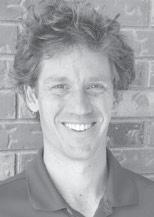
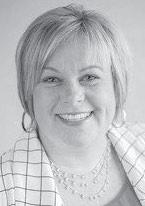
Band’s expectations not met

Shuswap Band would like to formally address our concerns over the manner in which our 2023 ceremonial salmon release press release was handled in the June 15 issue of the Columbia Valley Pioneer.
We would like to state on record that we are extremely disappointed with the actions of the Pioneer for integrating our press release into yours without credit or communication.
Shuswap Band’s press release, which was provided to you, was to be published alongside the Salmon Chief’s interview. This was communicated to us by your team, who even went as far as holding off publishing the interview until you had our press release.
We had also stated that we would be happy to pay to have our words posted. This is because these words were

directly from Shuswap Band Chief and Council, and we did not want them to be misrepresented. Instead, we have read the article and discovered that you have taken our carefully written release covering our culturally signficant salmon event and used it to pad your own article.
We are disappointed with the lack of professionalism displayed in this event and would have appreciated communication around this approach. That way we could either approve you integrating our words into your article or pull the press release altogether. As it stands, you have plagiarized our words, which is highly inappropriate for an organization that considers itself a sought-after and trusted news source.
Communications Team, Shuswap Band

6 • The Columbia Valley Pioneer June 22, 2023
Shown here in this 1950s photograph are Phyllis and Alexander “Scotty” Falconer seated at a table outside a resort.
PERSPECTIVE is independently owned and operated, published weekly by Robert W. Doull, President and Publisher, Misko Publishing Limited Partnership. Box 868, #8, 1008 - 8th Ave., Invermere, B.C. V0A 1K0 Phone: 250-341-6299 | Toll Free (866) 496-8047 info@columbiavalleypioneer.com | www.columbiavalleypioneer.com The Columbia Valley PIONEER CANADIAN COMMUNITY NEWSPAPER AWARD 2013 Amanda Nason Associate Publisher/ Sales Manager Ext. 102 Steve Hubrecht Magazine Editor/ Reporter Ext. 105 The Columbia Valley Pioneer is available free of charge at 13 essential businesses in the Upper Columbia Valley, limited to one copy per reader. This publication has been made possible, in part, by the Government of Canada and the support of our advertisers and is published every Thursday. The Columbia Valley Pioneer may be distributed only by its authorized contractors and employees. No person may, without the prior written consent of The Pioneer or its Publisher, take more than one copy of each issue of The Pioneer The content is protected by copyright. Reproduction by any means is prohibited except with the permission of the Publisher. Chris Moseley Graphic Designer Ext. 107 Jamie Baes Sales Representative Ext. 103 Julia Magsombol Reporter Ext. 106 Lyonel Doherty Guest Editor editor@columbiavalleypioneer.com Christina Boucher O ce Administrator Ext. 101
Photo provided by the Windermere and District Historical Society
Historical Lens Historical Lens
Water restrictions set
By Steve Hubrecht steve@columbiavalleypioneer.com
Both the District of Invermere and Village of Radium Hot Springs have implemented stage two water restrictions for much of the summer.
But if this conjures up images of empty reservoirs, relax: neither Invermere nor Radium is about to run out of water.
The restrictions are about water conservation education and getting people in the habit of using only what they need before trouble arises, not a measure implemented because trouble has already arisen. The restrictions are also in place because water use soars in both municipalities in the summer — thanks in part to people watering lawns and gardens, and thanks in part to the population swelling with second homeowners and summer visitors. In Invermere the overall water increase can be up to 50 per cent above normal water use levels during the busy summer season.
“It’s education. We do not have a water shortage and we don’t want to have a water shortage,” Invermere Mayor Al Miller told the Pioneer. “Our water use really does increase quite substantially (in summer) with the lawn watering and with the larger population.”
By getting Invermere residents and visitors in the habit of cutting back their water use now, hopefully if water supply
does become an even more critical issue in the future, owing to climate change, people will be well versed in conservation techniques.
“You don’t want to be behind the ball. So we thought: let’s pre-empt things and get people on the right track,” said Miller.
“We’ve come a long way over the years. It used to be that toilets used 12 to 13 litres per flush. We’re not doing that anymore, thankfully. But we can make it better still,” he said.
Invermere has two main water sources: the Paddy Ryan Lakes reservoir and a well in Athalmer that taps into an aquifer.
Radium Mayor Mike Gray told the Pioneer that the village conducted a water viability study a few years ago, and its reservoir, which is up Forster Creek, is in no danger of running out.
“We’re overall in a good position. However, demands on our water system during the summer are very high compared with the rest of the year. With the restrictions, we just want to make sure we are trying to control waste where we can.”
The restrictions include using sprinklers and irrigation systems from 4 a.m. to 10 a.m. or 7 p.m. to 11 p.m., and limit odd numbered houses to using sprinklers on their lawns, trees and shrubs on Mondays and Thursdays, and even numbered houses doing the same on Tuesdays and Fridays.

Pursuant to Section 98 of the Community Charter (BC), the Annual Meeting and presentation of the 2022 Annual Report for the District of Invermere will be presented during the June 27, 2022 Regular Meeting of Council

The Annual Meeting will take place at 7:00 pm in the Invermere Council Chambers located at the District of Invermere Municipal Office at 914 – 8th Avenue, Invermere, BC VOA 1K0

Council invites submissions and questions concerning the 2022 Annual Report In order to be considered by Council they need to be submitted to the Municipal Office before 4:30 pm on June 26, 2023
Please email submissions, questions, or comments to info@invermere net
Copies of the 2022 Annual Report are available for public inspection at:
• District of Invermere webpage: https://invermere civicweb net/filepro/documents/9116

• District of Invermere Facebook page: www facebook com/districtofinvermere
• District of Invermere Municipal Office, located at: 914 – 8th Avenue, Invermere, BC VOA 1K0 Tel: 250-342-9281


Fax: 250-342-2934
















(copies are available during regular business hours, 8:30 am to 4:30 pm )
Questions concerning the content of the 2022 Annual Report may also be addressed to District staff by email, telephone call, or in person
Andrew Young, MCIP, RPP Chief Administrative Officer
June 22, 2023 The Columbia Valley Pioneer • 7
R E G I S T E R N O W ! S75% OLD FINAL PHASE 5 L A S T C H A N C E Spor ts Lof t & Home Gym Workshop & Hobby Space Boat, RV & Toy G arage • Up to 1,680 Square Feet with M ezzanine/Lof t • 100 Amp, 120/240V Panel • 12’&14’w x16’ h Rollup Doors • Heated and water ser viced • Securit y Gate Access I N V E S TO R S – L E A S E H O L D O P P O R T U N I T I E S! O W N YO U R S TO R AG E W I N D E R M E R E B AY S O F 1496 Hw y 93/95 Windermere, BC Please c all to arrange a tour. BaysofWindermere.com • 250-688-0512 SOLD A N N U A L M E E T I N G A N D 2022 R E P O R T 914 – 8th Avenue, PO Box 339 Invermere, BC V0A 1K0 Tel: 250-342-9281 • Fax: 250-342-2934 DISTRIC T OF INVERMERE DISTRIC T OF INVERMERE









8 • The Columbia Valley Pioneer June 22, 2023
festival
inclusive
Pride
made
and fun
The Pride festival in Invermere on June 17 featured a mixture of fun and games focusing on inclusivity and “being yourself.”
w w w . c o l u m b i a v a l l e y a r t s . c o m ON NOW. DELREE DUMONT METIS SHOW @ JUNE 1 - JULY 1 PYNELOGS C u l t u r a l C e n t r e Congratulations CELEBRATE YOUR GRADUATE’S ACHIEVEMENT Space is booking up quickly, so be sure to give us a call if you want to reserve your congratulation message In this year’s grad feature. For information and pricing contac t Jamie Baes at 250-341-6299 ex t. 103 or e -mail jamie@columbiavalleypioneer.com to par ticipate.
Photos by Nadine Hale and Alex Crawford
RDEK urges proper disposal of yard waste
Columbia Valley Pioneer Staff
Are you disposing of yard and garden waste properly? at’s what the Regional District of East Kootenay (RDEK) is urging residents to do this summer.
e RDEK is asking residents to ensure they are utilizing appropriate drop-off locations for proper diversion of waste.

“We are grateful that residents recognize the need for separation from household garbage when it comes to yard and garden waste, but we are frequently seeing large amounts of this debris left at transfer stations that are
not equipped to receive it,” said RDEK Environmental Services Manager Kevin Paterson.





He explained when yard and garden waste is brought to an appropriate drop-off location, personnel can divert that material for other purposes and keep it out of the landfill. But when it is taken to a site that doesn’t have these capabilities, the costs to residents increases as removal crews need to be called in. He noted that when debris is mixed with garbage, it makes it impossible to divert.
Locations that accept yard and garden waste include the Cranbrook, Kimberley, Elkford, Fernie, Sparwood,



Canal Flats, Tie Lake, and Wasa Transfer Stations, as well as the Columbia Valley Landfill. is service is free and available to all residents within the RDEK.
In addition to yard waste, many transfer stations and landfills offer a combination of free diversionary drop-off options including large and small appliances, mattresses, hazardous waste, electronics, and more.
“We know that residents are making the effort to reduce their environmental footprint and we want to be able to assist them whenever possible,” Paterson said. For more information, visit www.rdek.bc.ca.


June 22, 2023 e Columbia Valley Pioneer • 9
Athalmer in the rain. Boring things, like working water and sewer services, sidewalks and roads, don’t seem very exciting until you don’t have them — or they are underwater.
Watmough Mountain Villas, Cottage Homes & Vista Chalets A Recreation Community 250-688-1247 Invermere | 403-369-3000 Calgary “We are happy to meet you at our design center in Calgary” pineridgemountain.ca LearnMore! The Villas Single level living 1708 sq.ft. • 2 Bedroom • 2 Car Garage • Option for developed lower level DEVELOPING LIFESTYLES FOR HALF A CENTURY Photos and renderings are for marketing purposes only and may change without notice. *This is not an offer for sale of The Villas at this time. Such an offer can only be made after filing a disclosure statement. Disclosure statements can be obtained from Statesman Group of Companies–Canada after filing. The Villas! Visit us in our SALES CENTER #21 – 1904 Pineridge Mtn Link, Invermere Thu–Sun 9am – 5pm or by appointment
Photo
by Ryan
OU T O F O F F I C E
Enhancing Invermere’s Vibrancy

The Columbia Valley Chamber of Commerce, in par tnership with the District of Invermere, is thrilled to introduce the 2023 Mural Grant Program This initiative represents a significant investment in public ar t, aiming to enhance Invermere’s visual appeal, engage the community, foster an appreciation for ar t, generate employment oppor tunities in the ar ts, attract tourists, and boost economic vitality in the area With this program, businesses within the District of Invermere have the oppor tunity to contribute to the vibrant ar tistic landscape of the town

The Mural Grant Program welcomes applications from any business within the boundaries of Invermere To ensure fairness, businesses owned by District of Invermere council members or staff are excluded from eligibility Applicants must own the proper ty or obtain written permission from the proper ty owner Additionally, a valid business license within the district is required The program will fund up to four murals, covering 75% of the project cost, up to a maximum of $5000 Successful applicants are responsible for the remaining 25% of the project cost
Applications for the Mural Grant Program open on June 12, 2023, and must be submitted by June 30, 2023 Applicants must provide photos of the mural location and include a visual representation such as a drawing, sketch, or
inspiration for the mural In addition, the application requires the completion of a budget template and a signed copy of the program rules and guidelines
The Invermere Mural Project holds tremendous potential for enhancing the vibrancy of the town Murals have the power to transform blank walls into captivating displays of ar tistry and storytelling By infusing colour, creativity, and cultural significance into the urban landscape, these large-scale ar tworks breathe new life into public spaces They create an immersive experience for residents and visitors alike, making Invermere a more visually appealing and engaging destination
The Invermere Mural Project, facilitated through the Mural Grant Program, presents an exciting oppor tunity for businesses to par ticipate in the creation of a visually captivating town By investing in public ar t, Invermere aims to foster community engagement, promote ar tistic expression, and drive economic vitality
To learn more or to submit an application, please visit www cvchamber ca or email advisor@cvchamber ca

10 • The Columbia Valley Pioneer June 22, 2023
…
Thursday, June 22
• 9 a.m.: Pickleball Club Drop -in Play at Mt Nelson Park
• 9 a.m.: StrongStar t/C AP- C Edgewater Elementar y Join this free drop -in program; ages 0-5 + caregivers
• 10 a.m.: Parent & Tot Connec t at Frater Landing Parents & ages 0-6 are invited to this FREE drop -in program.
• 10:15 a.m.: Tech Time Invermere Public Librar y Come for one - onone tech help

• 10:30 a.m.: Seniors' Fitness at the Columbia Valley Centre, $2 drop -in.
• 12- 1 p.m.: Seniors ’ Lunch at the Legion (second Thursday of each month), to reser ve call Jan: 250-342-1196
• 2 p.m.: Copper Point Golf Course Ladies Day (ever y Thursday of summer). Play 9 or 18 holes, call 250-341-3392 to learn more
• 2- 3 p.m.: Weekly Librar y Meet-Up Seniors Tea is ever y 2nd and 4th Thursday; Needles and Hooks is ever y 1st & 3rd Thursday
• 2 p.m.: Tech Time at the Radium Public Librar y Come for one - onone tech help.

• 3 p.m.: FREE Youth Drop -In Fun Summit Youth Centre Hub Grade 7-12 come to meet, hang out and enjoy time with friends.
• 6:30 p.m.: Invermere Pickleball at Curling Club
• 6:45 p.m.: Texas Hold ‘Em Poker at the Invermere Legion
• 7:30 p.m.: Trivia Night at the Windermere Whitehouse Pub, $3/ person.
• 8 p.m.: Trivia Night at Ullr Bar
Friday, June 23
• 9-11 a.m.: Little Badgers Playgroup. For caregivers and kids 0-5: nature play, songs, stories, snacks
• 9 a.m.: Tennis Club at the Kinsmen Beach Cour ts
• 9:15 a.m.: StrongStar t Eileen Madson. Ever y Monday & Friday; Ever y 1st & 3rd Wednesday For children 0- 5 and caregivers!
• 10:00 a.m.-noon: Pickleball at Mt Nelson Athletic Park
• 10:30 a.m.: Family Stor ytime Invermere Public Librar y Join us at the librar y each week for stories, songs and a crafts!
• 1 p.m.: FREE Youth Drop -In Fun: Summit Youth Centre Hub For grades 7-12, come meet, hang out with friends
• 2 p.m.: Fun Fridays at the Invermere Librar y Crafternoons/ Steam on alternate weeks
• 3 p.m- close: Wings & Things at the Legion, pub grub done right!
• 6:30 p.m. - close: Meat Draw and 50/50 in the Legion! Members and guests welcome!
• 6:30 p.m.: Invermere Pickleball at the Invermere Curling Club
• 7 p.m. - 9 p.m.: Drop -In Adult Parkour Unit 6, 1340 Industrial Road #3. Adults are invited to drop -in for $20! Ever y 2nd Friday
• 6:30 -8:30 p.m: Dynamic Archer y Speed Shooting Come tr y Archer y at Luxor Corrals Call 250-347-9048 to register
Saturday, June 24

✰ 10 a.m.: Garden tour and learning session at Groundswell. Groundswellnetwork.ca
• 9 a.m. – 1 p.m.: Invermere Farmers Market at the Lakeview Parking Lot
• 10:00 a.m.-noon: Pickleball at Mt Nelson Park
• 10:30 a.m.: LEGO/D uplo Club Invermere Public Librar y We'll have Lego, Duplo, big blocks & more out to play with on Saturday mornings!
• 10:30 a.m.: Pokemon Club at Main Street Fun & Games for ages 7+, Reading proficienc y required
• 3 p.m. Wings & Things, Meat Draw & 50/50 at the Legion, pub grub done right!
Sunday, June 25
✰ 9 a.m.: Hike/ Walk for Hospice. Join Hospice to Walk in memor y of your loved ones and in suppor t of our organization. Register at w w w.hospicesocietyc v.com
• 10a.m.: Indoor Pickleball at the Invermere Curling Club
• 11 a.m. -2p.m.: Toast & (music) Jam at the Village Social, Canal Flats Bring your own instrument, join the jam or come enjoy live music
• 2 p.m. - 11:59 p.m.: Cards, Cribbage and Dar ts Come to the Legion and have some fun! Members and guests welcome
• 2 p.m.: Invermere Pickleball Open play at Curling Club
• 3 p.m. - 11:59 p.m.: Wings & Things 525 13th Street, Invermere, BCWings & Things at the Legion.
• 6 p.m.: Archer y at the Range: Lake Windermere Rod & Gun Club Equipment available to rent. w w w.lwdrodgun.com

• 7 p.m.: Live Music at Horsethief Creek Pub & Eater y Accompanied minors are permitted No cover
Monday, June 26
• 9 a.m.: Tennis Club doubles at Kinsmen Beach
• 9:15 a.m.: StrongStar t at Eileen Madson Ever y Monday & Friday & Ever y 1st & 3rd Wednesday for children 0-5 & their caregivers!
• 10 a.m. Senior's Yoga at the Columbia Valley Centre, Invermere, BC $2 drop in, open to all seniors
• 10:00 a.m.-noon: Pickleball Club at Mt Nelson Athletic Park
• 3 p.m.: Youth Drop -In @ The Edge Edgewater youth grades 4-8 are invited to drop -in for fun with the Summit Youth Hub
• 4 p.m.: FREE Youth Drop -In Fun: LGBTQ+ Summit Youth Centre Hub For grades of 7-12, come to hang out FREE fun! Mondays are for LGBTQ+ and allies!
• 5 p.m.: Industr y Night @ the White House Pub Windermere 5pm Free pool + cheap drinks for resor t & restaurant staff
• 6:30 p.m.: Poker (Chip up for Charity) @ the Station Pub $20 buyin. Ever y second Monday
• 6:30 p.m.: Pickleball indoors at the Curling Club.
• 6:30 -8:30 p.m: Dynamic Archer y Speed Shooting Come tr y Archer y at Luxor Corrals Call 250-347-9048 to register
Tuesday, June 27

• 9 a.m.: StrongStar t/C AP- C Edgewater Elementar y. Tuesdays and Thursdays 9:00 am - 11:30 am Join this free, drop -in program for children ages 0 to 5 and their caregivers
• 10 a.m.-noon: Pickleball Club Drop -in Play at Mt Nelson Athletic Park
• 10 a.m.: Parent & Tot Connec t at Frater Landing Parents and their young children (ages 0-6) are invited to this FREE drop -in program!
• 10:30 a.m.: Senior's Fitness Columbia Valley Centre Columbia Valley Centre on Tuesdays, $2 drop -in.
• 10:30 a.m.: Home -School Meetup at the Invermere Librar y
• 11:30: Little Lambs at the Radium Librar y Songs, rhymes, and stories with your babies (no registration required).
• 3 p.m.: FREE Youth Drop -In Fun Summit Youth Centre Hub For grades 7-12, come hang out and enjoy some great times
• 6:30p.m.: Pickleball Club Skills and Drills at the curling club
Wednesday, June 28
• 9 a.m.: Tennis Club at Kinsmen Beach Cour ts
• 9 a.m - 11 a.m.: StrongStar t Canal Flats Join this free, drop -in program for kids 0-5 and their caregivers
• 9:15 a.m -11:45 a.m.: StrongStar t Eileen Madson. Ever y Monday & Friday; Ever y 1st & 3rd Wednesday
• 10 a.m.-noon: Pickleball Club Drop -in Play at Mt Nelson Park
• 10a.m.: Parent & Tot Connec t Canal Flats Village Office. Parents + kids (ages 0-6) invited to this FREE drop -in program!
• 10 a.m. - 11 a.m.: Senior's Yoga at BC Columbia Valley Centre, $2 drop -in.
• 11:15 a.m.: Stor y Time at the Radium Librar y – preschool & all ages
• 3 p.m.-6:30: Agri-Park Farmers Market at the crossroads
• 3 p.m.: Youth Drop -In @ The Edge Edgewater youth grades 4-8 can drop -in at the Edge
• 6 p.m.: Write on! Writing Club at the Invermere Librar y
• 6 p.m - 9 p.m.: Wednesday Dinners & Meat Draw at the Invermere Legion. All welcome
• 6 p.m.: Archer y at the Range Visit w w w.lwdrodgun.com to learn more
• 6:30 p.m.: Invermere Pickleball Ladies Night At the curling club
June 22, 2023 The Columbia Valley Pioneer • 11
Green thumbs up for young gardeners
 By Steve Hubrecht steve@columbiavalleypioneer.com
By Steve Hubrecht steve@columbiavalleypioneer.com




Local students had the opportunity to get their thumbs a bit greener and to get a tasty, healthy lunch as well last week during an event organized by the Groundswell Network Society.
Groundswell brought Edmonton whole food experts Sonya Buys and Paul Braconnier to the Columbia Valley on

Thursday, June 15. The couple set up shop in the Mount Nelson Athletic Park (MNAP) community gardens. Throughout the day, classes of students from J.A. Laird Elementary School came over to the gardens, where Buys and Braconnier took them around the garden beds, teaching them the benefits of growing their own food, and then gave the kids a delicious ‘workshop’ by letting them cobble together a variety of wholesome ingredients in
vegetable wraps.
The couple’s visit was part of Groundswell’s student gardener program which designates several beds in the community garden for Laird students. The program aims to have kids learn how to create a garden, from planning and planting right up to harvesting, freezing and canning.
“The idea is to get kids to get their families to eat healthier,” Groundswell member Barbara Thrasher told the Pioneer
Buys and Braconnier were both energy industry executives before retiring several years ago and devoting their lives to other pursuits. Buys became ill and was inspired by that to do nutritionist train-

ing. That grew into attending the Rouxbe School of Plant Based Nutrition, and then eventually she did formal chef training.

The couple now spend their time teaching others about the importance of healthy eating.


“Food is our fuel. And, of course, we want to put the best possible fuel into our bodies for the best possible performance,” Buys told the Pioneer. “It’s been a great day. The kids are engaged, knowledgeable and highly participatory. I’m delighted with how it’s turned out . . . the teachers (at Laird) and Groundswell are really doing something special for the kids with the gardening program. It’s great.”
About


Friday, July 7
Porch Parties around Edgewate
Saturday, July 8
All Day Music at Edgewater Par

All Saints

12 • The Columbia Valley Pioneer June 22, 2023
(Left to right) Jessie Caza, Paul Braconnier, Sonya Buys and Anna Grant were on hand at the Mount Nelson Athletic Park community gardens explaining the benefits of growing your own food and healthy eating on June 15 as part of the Groundswell Network Society’s student gardening program.
The Twelfth Annual Steamboat Mountain Music Festival Sunday, July 9 Music Workshops at
Photo by Steve Hubrecht
Buckley Greg Koch Shaela Miller Norther n Quarter Also Featuring: Muddy Souls, New Moon, Blitzen Coast, Smar t y Pants,The Usual Suspects and more EARLY BIRD TICKETS ON LINE @ EVENTBRITE OR CASH ONLY AT LOCAL TICKET OUTLETS: Edgewater Pip’s Store & the Post Office Radium Far Out Gear Br isco Br isco General Store Inver mere Arrowhead Brewer y, Circle Cafe, Inspire Floral Boutique, Pynelogs Cultural Centre See website for details tickets and meal options: mountainalfresco.com 250-342-9281 ext 1232 events@invermere net invermere net This is an ADULTS ONLY event All guests must wear white attire for entry, no exceptions No outside liquor is permitted Cash Bar available on site Be original and classy If you would like to pre-order a meal please do so online (mountainalf resco com) before July 3rd, 2023 A D I N I N G E X P E R I E N C E I N W H I T E
T
Mountain
Fresco 7th annual “flash mob” style dining event This event features some of Invermere’s favourite restaurants Held at a top-secret location with all guests dressed strictly in white Sit back or kick off those white shoes and dance! Enjoy dining al f resco at Invermere’s Mountain Al Fresco, a dining experience in white! Get yours Online at MountainAlFresco com Tickets $25 12:00pm – Secret location revealed via email 6:00pm – Event grounds open 7:00pm – Dinner 6:00pm – 8:00pm – Pianist & Singer Bryant Olender 8:00pm – 10:00pm – DJ Todd JULY 8 2023 Mountain Al Fresco h
Al





June 22, 2023 The Columbia Valley Pioneer • 13
June is a great opportunity to learn about Indigenous heritage and culture since it is National Indigenous History Month, with June 21 highlighted as Indigenous Peoples Day. This is a day when First Nations, Inuit and Métis people recognize and celebrate their heritage. It was originally called National Aboriginal Day in 1996. This day was announced by Governor General of Canada, Roméo LeBlanc, through proclamation with support from various Indigenous groups. In 2017, Prime Minister Justin Trudeau renamed National Aboriginal Day and replaced it with National Indigenous Peoples Day.

But of all days, why the 21st day of the month? They chose this day because it’s the day of the summer solstice — the longest day of the year, symbolizing a new season of life for many Indigenous Peoples. “It was something that is a growing up to the heart of truth and reconciliation,” said Sharon Wass, a member of the Columbia Valley Métis Association. Like many Indigenous Peoples, Wass grew up without any real personal identity. “When I was young, I envied other kids because I knew that they


had their national costumes and national dances, but I didn’t,” Wass explained. “This day is important because you’re not going to develop an understanding of where people are from and what their beliefs are unless you start to recognize them.”

Jennifer Pratschke, a settlement worker from Columbia Basin Alliance for Literacy, has a chance to go to her son’s class at an Elder’s home to spend the day learning their culture and identity. “I hope to move forward with truth and reconciliation by learning more about this place that we all love and call home,” said Pratschke. National Indigenous Peoples Day is celebrated for only a day, but Wass believes it should be celebrated every day to move forward in truth and reconciliation. “We honour those truths every single day,” Wass noted.
For more information, visit:

















NATIONAL INDIGENOUS PEOPLES DAY Salmon release brings ceremony back

Submitted by Shuswap Band
On May 26th, 2023, Shuswap Band Chief & Council, staff, and membership, along with participants from the Secwepemc, Ktunaxa, and Okanagan Nations, completed the second annual ceremonial release of Sockeye salmon into Dutch Creek. The release of 1500 fry also included ceremonial prayers, songs, and speeches honoring the vital importance of salmon as a key Indigenous cultural cornerstone. Salmon Chief Mark Thomas led the ceremony and was joined by Shuswap Band’s newly appointed Youth Salmon Chief Devin Capilo.
The release marks the continuation of ongoing salmon reintroduction efforts in the Columbia River Basin. This is the second time these headwaters waters have seen salmon in over 83 years, after the Grand Coulee and the Chief Joseph dams blocked the migratory routes that salmon relied on since time immemorial. These decades without salmon have had severe impacts on those who relied upon this vital resource for survival. The loss of language, ceremony, culture, knowledge transfer, health, and economy are a few examples of that loss. This ceremony was intended to “Call the Salmon Home” and
allow the community an opportunity to strengthen their connection with salmon after decades of separation.






Last year’s release was intended to provide the Elders with the first chance at handling fish in the headwaters, as they have suffered the longest. Shuswap Band was able to invite more spectators and participants to this year’s event. This is the second of many anticipated salmon releases in the Columbia River Basin as we work tirelessly to create the reality where our future generations have access to a fundamental resource that used to be so plentiful in our waters. We hope to open future releases to the public so all in the valley can understand the significance of returning salmon to the river.
Kukwstec-kuc to everyone who made this event possible, including: Braydi Rice for leading the event coordination and all Shuswap Band staff involved in planning; support provided by the Shuswap Nation Tribal Council; the technical support provided by Jon Bisset, Camille Des Rosiers-Ste.Marie, Scott Cope, and Wyatt Cope; the attendance of Secwepemc, Okanagan, and Ktunaxa Elders, Youth, and Knowledge Keepers; the ONA Hatchery for providing the 1500 salmon fry that were released; Roslyn Jackson and Emily Raymond for delivering the 1500 fry
from the ONA Hatchery in Penticton; local dignitaries who attended; our donors who helped fund the event and make it possible; and all else who were present to see this historic event unfold.
Please join the Shuswap Band in Invermere on September 9th for the annual Salmon Festival. This event will provide participants with the opportunity to learn about salmon, enjoy some of the local artistry, and immerse themselves in Indigenous culture.

14 • The Columbia Valley Pioneer June 22, 2023 INDIGENOUS PEOPLES DAY
https://www.rcaanc-cirnac.gc.ca/eng/1100100013718/1534874583157 WS P P R
Photo by Ryan Watmough
DAY
















A Q&A with ?Akisq’nuk Chief Donald Sam












 By Julia Magsombol Local Journalism Initiative julia@columbiavalleypioneer.com
By Julia Magsombol Local Journalism Initiative julia@columbiavalleypioneer.com




Chief Donald Sam officially became the new ?Akisq’nuk Chief last year, and the Pioneer had the chance to talk to him about his thoughts and opinions on Indigenous Peoples Day.


He went back and told his parent’s story of residential schools — his feelings on it and the peace he’s been working on for a long time. Chief Sam is one of many first-generation residential school survivors.

What does Indigenous Peoples Day mean to you and what should people do on this day?






Growing up and not having that recognition of the Indigenous People’s identity of the custom ?Akisq’nuk of my ancestors right here in the Columbia Valley was simply strange. It was strange having stories at home. And, you know, there's a whole different history. It's so important to raise awareness of the history of our Nation.
Our language is critically endangered. There are few people that can speak our language anymore, which is very unfortunate. So now, here we are. We are trying to describe ourselves in our own language. People forget. Non-Indigenous people aren't even aware of the Indigenous Peoples around them.
The problem I see in any of these public displays on Indigenous Peoples Day is that people always look for the beads and feathers. People always want to be part of the celebration. They want to be seeing the dance and the song – that's not really who we are, and I'm hoping that people can appreciate the complexity of us.
I'm not saying there isn't a place for celebration, but it should lead to a greater appreciation of the stuff down here,


like our family ties and aspirations.

And so, on National Indigenous Awareness Day, people should recognize and learn a little bit about us that are here.

What stories do your parents mention of residential schools?





My father is non-Indigenous, so he didn’t have to attend residential school. My mom and my grandparents did. They all went to residential schools, and because of that, my family dynamics got really messed up.




My mom said that she used to run away from the school a lot. She'd run away, and then they would bring her back. And she'd be disciplined for that. I remember the times she told me about the discipline they had. They told her to put her hands out. They put Bibles on her hands, and [said] she should not drop them.

When they got strapped, they'd all line up. Some of the kids would be even mean to each other. They'd say, lick your hands, and it won't hurt. But your hands would actually hurt more, and frankly, it stings a lot more. I can see why my mother would run away. My whole family was displaced – whether from the residential school or the effects of the trauma they felt from the residential school. They are prisons. Residential school is an imprisonment.
What do you feel whenever you hear these stories? How are you and your family?
It’s hard for me to hear a grown Elder cry and share their story. I have a lot of hope for generations that didn't have to attend the residential school. I remember

as a kid my mom suffered from alcoholism. And I remember my sisters and I got in trouble. I was crying and asked one of my sisters, “Why do we always get in trouble.” And my sister told me, “well, it's because that's how mom was raised. And that's how her parents or her parents were treated. It's up to us to break that cycle.”
And so, I think I grew up with that — knowing there's a cycle of abuse. We had to break that cycle. I like to think we broke that cycle of abuse for our families and hopefully in the future. Other families are also breaking the cycle. Intergenerational trauma is something real. I call them triggers. Sometimes I react in ways, and my wife will call me on it.

Continued on page 16

June 22, 2023 The Columbia Valley Pioneer • 15 INDIGENOUS PEOPLES
Facilitated by Jenna Jasek
Robin Wall Kimmerer Kevin Lamoureux Bonnie Harvey
Smokii Sumac Nasuʔkin (Chief) Joe Pierre Sophie Pierre
Dr Christopher Horsethief
Ariana Roundpoint Doug Anderson
R EG I S T E R I N D I G E N O U S K N O W L E D G E A N D P E R S P E C T I V E S A R E F O U N D A T I O N A L T O O U T D O O R L E A R N I N G CBEEN.CA/4SEASONS O C T O B E R 2 0 2 3 t o J U N E 2 0 2 4 I n d i g e n o u s Le a r n i n g 4SEASONSOF Co lumbia BasinEnvironmental EducationN etwork CBEEN NATIONAL INDIGENOUS PEOPLES DAY NATIONAL INDIGENOUS PEOPLES DAY
Dr. Niigaanwewidam James Sinclair
INDIGENOUS PEOPLES DAY




Chief Donald Sam
Continued from page 15
And it's really good because I've done a lot of work on it — my own mental wellness. I’m learning about my triggers.









































































How’s your healing? Have you found peace?
Rocky Mountain School Distric t No 6 is located on the unceded lands of the Sec wépemc and Ktunaxa People and the chosen home of the Métis People of B C We are committed to our par tnership and deeply grateful to our Indigenous education par tners who are work ing tirelessly to improve the student outcomes of our Indigenous students.


BC






























We recognize and celebrate the unique heritage, diverse cultures and outstanding contributions of First Nations, Inuit and Métis peoples.

We acknowledge that we operate our business on the traditional territory of the Shuswap Band, part of the Secwepemc peoples, as well as the Akisqnuk First Nation.

Every day I find good in the world. But I wouldn't say I found peace. I’m not sure if I found a sense of peace yet because I can still get triggered. When I lost my mom, I had a real problem with the church, with God, and with my spiritual beliefs.

God didn't do the residential school— the idea of genocide. Humans were wrong in that. I don't know how that worked with the Creator and how we were subjected to that. But today, I am able to appreciate spirituality.




One of the Elders was telling me about religions. Whether we call it God – people may have Catholicism or Christianity, Buddha or Allah or all these different religions in the world. And they all go up to the same light up at the top. If I believe in the big guy, we're praying to the same Creator. It is just in different ways.
Maybe that is finding peace in that religious spirituality realm. Whether I celebrate that relationship of going to church on Sundays or praying. However, all that matters is having a relationship with that higher power and finding peace with the residential school. It’s really important to find peace














within ourselves; being able to appreciate one is having that spiritual and emotional balance.
With a spiritual balance and being able to lead or find guidance in that realm is to help in mental wellness. It encourages people to heal those traumas. It's important. But I don't even know what that means. How do we all heal from all those traumas? Well, we start by talking about them. We start by making a safe space so that people can truly share.
What’s your hope for the future?
It's okay to be unapologetically Indigenous. We can be Indigenous, and we don't have to be apologetic.
But that's also why I'm here. We still have a hundred generations from now. We still have our language. We still have our connection with a higher power. We still have our community. Due to the lateral violence we have experienced, healing is difficult. But we still have hope. I hope for the cohesiveness of our community. The cohesiveness is one of my dreams. My hope for the next generation is that we can come together and appreciate that everyone has a job. Everyone has a duty. We're a small Nation, and so everybody has a role to play in that cultural perpetuity.
Chief Don smiled brightly and said, “We want to be proud of who we are. Because if we're proud, then that helps perpetuate who we are, right?”




16 • The Columbia Valley Pioneer June 22, 2023
N A T I O N A L I N D I G E N O U S P E O P L E S D AY Jun e 21, 2023 I N V E R M E R E G O L D E N
PO Box
250-342-9243 Invermere,
w w w sd6 bc ca
250-342-8885
430
NATIONA L INDIGENOUS PEOPLES DAY
Band offers prayer for children
By Julia Magsombol Local Journalism Initiative julia@columbiavalleypioneer.com
On March 30, the Shuswap Band offered a prayer and a moment of silence for the 215 bodies of children found in Kamloops’ residential school.
"We were honouring the children and the residential school survivors," said Clarissa Stevens, the Cultural/Family Liaison & Indian Registry Administrator of Shuswap Band.



Stevens explained that these prayers started in 2020 when the remains of the 215 children were discovered.
"There have been more and more kids who have been found in school," said Stevens. "And the sad part about it is that it's wiped under the rug. There's not much publication on it anymore."
When they honoured the prayer in Shuswap Band Hall, they all wore orange T-shirts that symbolized the theme of “every child matters."


Stevens shared that they spoke about the residential school, the genocide, and the intergenerational trauma for many Indigenous communities. Her parents went to residential schools as well.
Continued on page 18
Triptician is proud to recognize






June 22, 2023 e Columbia Valley Pioneer • 17 NATIONAL INDIGENOUS PEOPLES DAY
N E WS P A P E R Join us as we honour and celebrate the Indigenous Peoples of the Columbia Valley - Shuswap Band, Akisqnuk First Nation, and the Columbia Valley Métis Association - and help to create a greater awareness of the important role they play in our community. , INDIGENOUS
June 21, 2023
PEOPLES DAY
Members of Shuswap Band say a prayer to honour the children who died in residential schools and those who survived.
Photo submitted
In dig en ou s Pe opl es Day 250 341 5751 www.Triptician.ca NATIONAL INDIGENOUS PEOPLES DAY National In dig en ou s Pe opl es Day Whitewater Rafting at 3 locations 1-800-599-4399
PEOPLES DAY
Band honours the children
Continued from page 17

"I was sitting there with my sister . . . I get heavy-hearted. Because when you get really sad, you could almost feel those emotions," Stevens explained with a feeling of sorrow in her voice. "I couldn't imagine what it would feel like to have my kid taken away at five years old and not seen for 10 months out of the year."
Stevens feels heavy and disappointed in what has happened to her ancestors and what they went through. And whenever she looks at her nieces and nephews, she can't "imagine and understand what that generation
went through then.”
After the prayers, they sang a Shuswap honour song for the children. They had chairs for the children who had gone and passed in residential schools and chairs for all the children who escaped and those who didn't return.
"Sometimes I get angry. How can any human being do that to another person? The boys and the girls couldn't talk," explained Stevens. "My mom didn't know what to do when she came home, and her brothers were there. I'm hearing many stories now from my parents, but a lot more about their feelings too."
Stevens said she also lost an aunt to a residential school. Her aunt was only seven years old.
"They just never made it home," Stevens said.
She noted that we've "got to start somewhere to start getting people to understand more" on this National Indigenous Peoples Day.
"I always have had the hope. This is not something that's going to end tomorrow – as long as I'm alive and teaching these younger ones. I will continue doing these things. Hope is always there," said Stevens.
She noted they plan to offer another prayer on September 30, the Indigenous National Day for Truth and Reconciliation. For more information, visit https:// www.shuswapband.net/



Funding for broadband project approved
Columbia Valley Pioneer Staff

With grant funding, the Ktunaxa First Nation (KFN) is ushering in a broadband connectivity project to bring high-speed Internet to 273 households.
Last week the Regional District of East Kootenay approved a Community Works Fund grant of $63,462 towards the $2.5 million project.

The KNC applied to Innovation Science and Economic Development Canada to provide a mixture of fiber optic and wire connectivity infrastructure that will

improve connectivity within rural and remote communities. Internet has become an essential service and provides access to numerous benefits such as tele-health and distance learning.

It was noted the project will better serve 165 homes in the Akisq’nuk First Nation, Shuswap Band, Windermere and Invermere areas, including Electoral Areas E and F.
A funding shortfall of $105,000 has been requested from the Columbia Shuswap Regional District for its share of the project.


18 • The Columbia Valley Pioneer June 22, 2023 INDIGENOUS
@ R U T H C AVA N A G H P H O T O G R A P H Y Recognizing National Indigenous Pe oples Day As we acknowledge and grieve our colonial past, we celebrate living in a new way with mutuality and respect Windermere Valley Shared Ministr y A shared ministr y of the Anglican and United Church NATIONAL INDIGENOUS PEOPLES DAY
D O U G C LO V E C H O K , M L A N A T I O N A L I N D I G E N O U S P E O P L E S D A Y C elebrate L isten L earn June 21, 2023 Doug Clovechok,
C
www DougClovechok ca
“I am thankful and proud to live on the traditional unceded territories of the Shuswap Indian Band, the Akisqnuk Nation, and the chosen home of the Métis Nation of B.C.”
ML A
olumbia River-Revelstoke
PEOPLES DAY
Join in the celebration
By Julia Magsombol Local Journalism Initiative julia@columbiavalleypioneer.com

On June 21, Shuswap Band invited everyone to celebrate National Indigenous Peoples Day for free at James Chabot Park from 1 to 4 p.m.

"I've been doing this for quite a few years (probably for the last 15),” said Clarissa Stevens, the Cultural/Family Liaison & Indian Registry Administrator of Shuswap Band.






"We put a lot of things together in this event," said Stevens. "I like being involved in this.”
She noted there were Indigenous craft vendors selling local T-shirts, and food was also available.

Stevens mentioned that a workshop that highlights their culture was also

free to attend. Here, people learned how to make pine needle baskets, medicine pouches, dream catchers, and more. A Pow Wow also took place throughout the celebration.
She pointed out that one of the event's highlights was the headwaters dancers, where Shuswap children performed their cultural dance.
"The dance starts at a young age, and gives them something to be proud of. There's a pride in their faces when I see them out there. It makes me happy," Stevens explained.
“The pride that comes with it is worthy," she described. "My hope for this event, was that many more people attended it and started learning about the different things that the Aboriginal or Indigenous Peoples do or went through."


OurCreation Story speaks of the giant, Naⱡmuqȼin, and a prophecy from the Creator that would create all the human beings in the world
Before humans, the land was occupied by the animals
At that time, there was a disturbance caused by a water monster known as Yawuʔnik who killed many creatures

Spirit Animals formed a war party to destroy Yawuʔnik, and the party (led by Naⱡmuqȼin) pursued Yawuʔnik through the Kootenay & Columbia river systems

After many adventures, and much cooperation between the Spirit Animals, Yawuʔnik was killed and butchered His meat was distributed among the Spirit Animals so that everyone was fed Yawuʔnik’s organs were removed and became the various races of people, scattered throughout the world
These events placed the Ktunaxa People here, in our ancestral homelands, as stewards of the land

The lakes and waterways are a testament of this feat, as are Yawuʔnik’s ribs, now known as The Hoodoos

When the prophecy was fulfilled, Naⱡmuqȼin, in all his excitement, rose to his feet, stood upright, and hit his head on the ceiling of the sky, knocking himself dead
His feet lay northward in a place we call Ya kⱡiki, in the Yellowhead Pass vicinity His head went south and rests near Yaqawxawiȼǂamki (Yellowstone Park in the State of Montana), and his body is now known as the Rocky Mountains

June 22, 2023 The Columbia Valley Pioneer • 19 INDIGENOUS
L E A R N M O R E : w w w k t u n a x a o r g / w h o - w e - a r e / c r e a t i o n - s t o r y ʔakisqnuk First Nation ʔaqam Yaqit ʔa knuqⱡiʾit Yaqan Nuʔkiy www akisqnuk org www aqam net www.tobaccoplains.org www lowerkootenay com CUSTOM HOME BUILDS & DEVELOPMENTS 250-341-5290 A c k n o w l e d g i n g N A T I O N A L I N D I G E N O U S P E O P L E S D A Y Jun e 21, 2023 S t ar t t od a y A p p l y a t c o t r. c a With
“NO B ODY C AN GO B ACK AND S TAR T A NEW BEG INNI NG, BUT ANYONE C AN S TAR T TODAY AND MAK E A NEW END ING.” - Maria Robinson JUN E 21 IS NATION AL INDI GEN OUS PEO PLES DAY
online and in-class programs and courses, an Indigenous Education team by your side to support you, and the inclusion of Indigenous ways of knowing into many of our programs, College of the Rockies can help prepare you to forge your new ending.

















20 • e Columbia Valley Pioneer June 22, 2023 Get your FREE copy every Thursday on newsstands near you! T HE P IONEER READY MIX CONC RETE Concrete Pump • Sand & Gravel Heavy Equipment Rentals • Crane Service Proudly Serving the Valley for over 50 years For competitive prices and prompt service, call: 250-342-3268 (plant) 250-342-6767 (office) I N P U R S U I T O F E X C E L L E N C E • Manufac turers & suppliers of qualit y concrete & gravel produc ts • Experienced, professional operators and th i ht equipment to get your job done • Ser ving the valley for over 30 years • Environmentally responsible • Steamed aggregate beds for top qualit y year-round crete supply We stand behind our ser vice, qualit y and produc ts o t 1756 Hwy 93/95 Windermere B.C. Office: 250-342-6500 • Toll Free: 1-888-341-2221 Ko otenay Pavin g Toll Free 1-888-341-2221 Call now for a free quote! Locally operated, with full-time staff to serve you better 1756 Hwy 93/95, Windermere, B.C V0B 2L2 Phone: 250-342-6500 • Fax: 250-342-3484 • Patches • Driveways • Parking Lots • Roads • And more! • Trusses • Engineered Floors • Wall Panels Tel: 250.341.6075 Fax: 250.341.3427 Email: info@duskbuildingsystems.com w w w.duskbuildingsystems.com 1320 Industrial Road #3 Box 159, Invermere, B.C. V0A 1K0 Call NOW: 250-688-0213 Carpets Dry in 1 Hour • Fastest Dr y Time • Environmentally Friendly Produc ts • Citrus Based, No Steam • Area Rugs and Upholster y • Stain Removal Specialists • Prompt Reliable Ser vice Visit w w w.heavensbest.com for more information Give us a call! James, 250-688-1267 or Jerr y, 250-342-5299 Email: jeffersoncontrac tingltd@gmail.com Specializing in all heating, elec tric, gas and wood. Fireplaces Commercial and residential • New builds • Renovations We also offer roundthe-clock ser vice calls A licensed registered and bonded company TILE AND GROUT CLEANING Business: 250-342-9692 RR#4 2117–13 Ave. Invermere, BC V0A 1K4 Cell: 250-342-1273 ptarmiganrugclean@gmail.com Furnace, Dryer and Duct Cleaning Tile and Grout Cleaning www.kootenayinsurance.ca P.O. Box 130 Invermere, BC V0A 1K0 Office: 250-342-2175 • Fax: 250-342-2669 Cindy.mack ay@kootenayinsurance.c a C olumbia C oncrete Inc. 250-688-3739 Ser ving the Columbia Valley 20 years’ experience • Anything concrete! • Basements • Garage pads • Driveways • Patios • Decorative • Exposed • Stamped concrete • Acid staining We are loc ated at 9120, Hw y 93/95 which is five kilometers nor th of Tim Hor tons • Ready Mix Concrete • Concrete Pumping • O ver 50 colours available and in stock • D E L I V E R E D ON TIME at a fair price • Full range of sand and gravel produc ts. Phone: 250-342-5833 • Cell: 250-270-9444 HERE TO SERVE YOU CARPET CLEANING CONCRETE CONTRACTING INSURANCE CONCRETE
































June 22, 2023 e Columbia Valley Pioneer • 21 We love a good photo submission. If you have a snapshot to share, email info@columbiavalleypioneer.com SHUTTER BUGS WELCOME NE WS PAPER NE WS PAPER #8, 1008 - 8th Avenue PO Box 868, Invermere, B.C. V0A 1K0 Ph: 250-341-6299 ext: 103 www.columbiavalleypioneer.com jamie@columbiavalleypioneer.com Your Weekly Source for News and Events Jamie Baes Advertising Sales 141 Industrial Rd. 2 • 250-342-9424 • Open Monday - Friday, 8:30 am - 5:30 pm ICBC Glass Repair Out of Province Vehicle Inspections Auto Body Repairs • Painting • Quality Parts SERVICE EXCELLENCE IN THE COLUMBIA VALLEY SINCE 1991 North American Warranty All Makes and Models Tire Sales and Installation Sales ~ Service ~ Installation UNIVER SAL DOO RS & EXTERIORS Arnold Scheffer 250-342-6700 unidoorext@live.ca • unidoorext.ca Industrial ~ Commercial ~ Residential * Vinyl Window Sales and Installation * New Construction and Renovation * Glass Replacement * Professional Installation 250 270 0086 • 20+ years of experience Renew Windows Limited E N E R G Y S T A R (Ser vicing the Valley since 1999) • Septic Tank Pumping • Portable Toilet Rentals • Complete sewer/drain repairs • Reasonable rates –Seniors discount • Prompt ser vice • A well maintained septic system should be pumped ever y 2-3 years to avoid costly repairs 250-347-9803 NOW OFFERING HYDROVAC SERVICES! 403-650-4622 • gar ysptg@gmail.com INTERIOR • EX TERIOR • WALL COVERINGS G ar y ’s Professional Painting & Decorating Ltd 1978 CUSTOM WO OD FINISHING FAUX FINISHES JOURNEYMAN RED SEAL Seniors Discounts FREE Estimates Loc al Resident OPENSJUNE23 250-417-6900 | 250-426-9774 E-mail: taraplbg@gmail.com Residential ✰ Commercial ✰ Renovations ✰ Mini-Excavation Services Ser ving the area for 50 years Patryk Jagiello STAIN/LACQUER/PAINT INTERIOR/EXTERIOR patco_dev@shaw.ca (250) 270-0345 in Calgar y since 2002 in Inver mere since 2004 Patco Developments Ltd. PROFESSIONAL PAINTERS GET YOUR QUOTE AT WWW.GREENLEAFTREE.CA INFO@GREENLEAFTREE CA R O O T E D I N T H E C O L U M B I A V A L L E Y S I N C E 2 0 0 7 W I N D E R M E R E , B C 2 5 0 - 3 4 1 - 7 0 2 9 G O L D E N , B C 2 5 0 - 3 4 4 - 0 1 8 8 T H E C O L U M B I A V A L L E Y ’ S C H O I C E F O R C E R T I F I E D T R E E E X P E R T S Tree Pruning Tree Removal Stump Grinding FireSmar t Treatmemts Cer tified. Insured. WCB Coverage 1298 Sunridge Road, Windermere, B.C. CELL: 250-270-1298 horningcooper@gmail.com Swansea Metalworks custom metal welding and fabrication Please call Steve ~ a real local you can tr ust! 250-342-1791 FREE ESTIMATES Chimney and Eavestrough Cleaning and Repair Specialists You name it! I’ll take care of it! Y O U R O N E - S T O P S H O P for all home maintenance from raking your lawn to renovating your entire house. Keep your loc al businesses alive. Get your tree ser vices right here in Invermere! Fully Insured & WCB Covered Pruning and Removal of A L L Trees and Shrubs • Stump Grinding • Fully Insured & WCB Covered OVER 30 YEARS EXPERIENCE Beat the fall rush ~ clean your Chimney this spring! CLEANING & MAINTENANCE ON ALL WOOD BURNING APPLIANCES • WET T INSPEC TIONS ROCKY MOUNTAIN CHIMNE Y SWEEPS LTD. 804 Almberg Road, Golden, BC V0A 1H2 CELL: 250.272.5599 OFFICE: 250.344.7323 todd@rockymountainchimneysweeps.com rockymountainchimneysweeps.com HERE TO SERVE YOU LANDSCAPING SERVICES SERVICES
Wetland hero helps mitigate climate change
Submitted by Kootenay Conservation Program

What well-known animal is quickly becoming a true climate change celebrity?
Think roly-poly body, squat legs, yellowy buckteeth, that pear-shaped profile on the Canadian nickel. Indeed, the lowly beaver may often be disregarded and in some circles despised. But for a landscape facing wildfire, drought or floods, Castor canadensis is a downright superhero — one that scientists and community groups in the Kootenays are turning to for answers.
The Kootenay Connect Priority Places project is following the science. Funded by Environment and Climate Change Canada and managed by the Kootenay Conservation Program (KCP), this seven-year project now has a number of partners working to enhance habitat for species at risk and build resiliency into local landscapes.
One partner is Brenda Herbison, a biologist from Argenta who knows just how big a role beavers play in contributing to an area’s ecological resilience.
“They’ve been shown to completely transform the landscape,” she says, “they’re the best engineers.” Herbison has seen the legacy beavers leave, even long after they’ve vacated a site. She’s now working on a project to enrich beaver habitat in the lower Duncan River valley bottom, an area that has seen a significant drop in beavers over the last decade. “We saw places that once had beaver colonies,” continues Herbison. “Now, no beavers.”
Notice of Annual Repor t and Meeting
Pursuant to Section 98 of the Community Char ter, the Annual Repor t for the Village of Radium Hot Springs will be presented during the June 26th, 2023 Regular Meeting of Council The meeting will take place at 4:00 pm in the Council Chambers located at 4836 Radium Boulevard, Radium Hot Springs, BC
Council invites submissions and questions concerning the Annual Repor t In order to be considered they need to be submitted to the Village Office before 4:00 pm on Monday, June 26th, 2023.
Please email submissions, questions, or comments to cao@ radiumhotsprings ca
Copies of the Annual Repor t are available for public inspection at: • Village of Radium Hot Springs webpage: www radiumhotsprings ca
• Village of Radium Hot Springs Village Office located at: 4836 Radium Boulevard, Radium Hot Springs, BC V0A 1M0 P 250-347-6455
(copies are available during business hours, 8:30am to 4:30pm)
Questions concerning the content of the Annual Repor t may also be addressed to Village staff by email, telephone call, or in person
Adrian Bergles
Chief Administrative Officer

So, what makes beavers so special? Why are thosein-the-know giving beavers nicknames like ‘ecosystem engineers,’ ‘environmental Swiss Army knives’ and ‘Smokey the Beaver’?

“When it comes to water, beavers slow it, spread it, and store it,” writes Dr. Emily Fairfax in a paper on how beaver-dammed areas stay green during wildfires. Fairfax, an ecohydrologist at the California State University Channel Islands, not only has data to prove the benefits of beavers on landscapes, she’s also found creative ways to share her findings. In a stop-motion video, Fairfax shows how one busy little beaver can build climate resiliency. The beaver dams a creek. Creek water slows and is stored in the pond. New channels are built, spreading water throughout the riparian area and floodplain. Birds, amphibians and fish return; the wetland thrives. When a disturbance like wildfire hits, the beaver’s boost of well-dispersed water provides refuge for other wildlife and helps to keep things green.
Green is exactly the colour the Columbia Wetlands Stewardship Partners (CWSP). Despite being designated a wetland of international significance, the Colum-
bia Wetlands face many threats, one of which is water loss due to climate change.
Dr. Suzanne Bayley, president of the CWSP, has seen the transformation beavers can make to wetlands, and respects their work ethic. “I’ll tell you one thing, I’m not as good as a beaver,” she laughs, “they’re out there every night, repairing their dam, not me.”
Bayley has a history with beavers. Her earlier academic work studied how beavers could mitigate the effects of climate in boreal wetlands that experience drought. Her study, published in the journal Biological Conservation, found that sites with beavers had nine times more open water than sites without, and suggested that “the removal of beaver from aquatic systems should be recognized as a wetland disturbance equivalent to in-filling, groundwater withdrawal, and other commonly cited wetland disturbances.” In brief, want to keep a wetland wet? Bring in a beaver.
It’s not always so simple. Not everyone loves the industrious beaver as a neighbour, especially if pastures are being flooded, roadways knocked out, or beneficial trees toppled. But there are solutions. Products such as a device cleverly called the Beaver Deceiver, among other techniques, are being used to encourage landowners to keep beavers within the ecosystem while directing their dam-building attention elsewhere. “The benefit of a beaver often outweighs the impacts,” Bayley says. “More wildlife habitat, increased biodiversity, climate change mitigation, turning something so simple into something complex — these are huge benefits.”
With this in mind, the Columbia Wetlands Stewardship Partners are currently researching the impacts of beaver dams in the Columbia Wetlands complex. Not only are they studying existing dam and lodge sites, they are also creating artificial beaver dams and protecting critical cottonwood stands from beavers using wire mesh.
A few valleys west of the Columbia Wetlands lies the Bonanza Biodiversity Corridor, a 15-km stretch of Inland Temperate Rainforest that connects the Valhalla Range with the Selkirk Mountains. Here, the Slocan Lake Stewardship Society (SLSS), is working to conserve the biodiversity of this small yet ecologically-essential wildlife corridor. Abundant with cottonwood, moistened by swamps, marshes and fens, the meandering floodplain is ideal for beavers. But according to SLSS, there could be more. After completing a three-year habitat assessment, they estimated 45 animals inhabit an area that could support double the number. “The thing to remember about beavers,” says ecologist Ryan Durand, “if food or water is scarce, they’ll move along. At this point, given what we know about our climate, we need more, not less, beavers.”
22 • The Columbia Valley Pioneer June 22, 2023
Believe it or not, beavers help mitigate climate change. Photo submitted
P O Box 340, 4836
Radium Blvd, Radium Hot Springs, B C , 250-347-6455
BC Corp Complete Drywall Services • Insulation • Boarding • Taping • Texturing • Ceiling Detail • Mouldings • Cultured Ceilings • Custom Detailing 250-409-5186 infoBC@greatwesterninteriors.com 1710 10th Avenue – Invermere, B.C. V0A 1K0 Scott Postlethwaite Residential Commercial Elec tric Furnace and Hot Water Tank Repair and Service For All Your Elec trical Needs invermereelec tric@gmail.com Free Estimates HERE TO SERVE YOU
P IONEER C LASSIFIEDS


• Phone: 250-341-6299
• Email: info@columbiavalleypioneer.com

• Web: www.columbiavalleypioneer.com


Paul Gro ot
Paul Groot (67) passed away in Edgewater, BC on May 19, 2023. Paul was born in Ontario and grew up in Papua New Guinea His life was full of adventures in PNG and he had many wild stories from those years

After high school, Paul returned to Canada and lived several years in Newfoundland before moving to Alberta. Approximately 23 years ago, he moved to Edgewater, BC which quickly became his home Paul loved the peace, nature, mountains, and fishing in the Columbia Valley

Paul was a k ind-hearted, caring, wise, funny, knowledgeable and talented person. He could fix anything or make what he needed.
Over 1 5 years ago, Paul suddenly lost his voice and shortly after wards was diagnosed with lung cancer. L ast summer he was in Kelowna for chemotherapy and radiation treatments, and had outpatient care in Cranbrook since then. The treatments and constant pain took a toll on Paul’s body, and his quality of life began to decline.
Paul was blessed with many friends in the Valley whom he enjoyed spending time with. His family is ver y grateful to ever yone who helped Paul when he became more limited in what he could do, but especially to Steve, L orie & Kevin, L es & Elena, Tex, Stacey, Herb & Sharon, Todd, Vic, Gord, Dale, Nathaniel, David & Chelice, James, Mark & Debbie - a huge thank you to each of you!!
Paul dearly loved his family and being with them, and took his role seriously in tr ying to be a good example to them. He is sur vived by his daughters (h e always called them his princesses) Nicole, Ashley (Joel), Kayla (Troy); his grandchildren Jade (Ayesha), Jessiah, Donovan, L ayla, Ireland, Brady, Kaliana; his sisters Ingrid (Robert), Karen (Derr yl), Miriam, Gail (Jayson), and several nieces & nephews
Besides his family and friends, Paul loved his L ord and Saviour, and had real peace in knowing God was in control of his life We find great comfort in knowing Paul is no longer suffering and is now living life to the fulles t with Jesus We picture him with a fishing pole in his hand and Suka, his beloved dog and best friend, by his side Happy fishing, Paul!
A celebration of Paul’s life will be held on June 24 from 2:00-4:00pm at 4880 Gacek Rd, Castledale, B.C.
G er tr ud Blumstengel (ne e R august)
August 26, 1941 – June 5, 2023





It is with great sadness and much love that we mourn the passing of Gertrud (Gerdie) Blumstengel in Victoria, BC, on June 5th after losing her courageous battle with breast cancer.
Gerdie was born in Wells, Austria In 1951 she immigrated with her parents to Ponoka, Alberta where they lived with her Uncle Art and Aunt Sophie
In 1960 she married her soul mate, Ehrenfried (Fred) Blumstengel Gerdie and Fred lived in Calgar y. In 1980 they purchased land in Brisco, BC and started bu ilding their dream home. In 1990 they moved there permanently. Gerdie moved to Victoria to live with Wayne and his family in 2020.
Gerdie was heavily involved in the community as a volunteer throughout her life She was an avid gardener and seamstress and a wonderful cook (especially those cinnamon buns) After the years of hard work in Brisco, managing a large property and home in Brisco, she was happy to just relax in Victoria, watching her favorite shows in her reclining chai r.
Gerdie was predeceased by her husband Fred and her daughter Toby She is sur vived by her son Wayne (wife Desiree), daughter Carol (husband Greg), her three grandchildren Joshua, Sienna and Sage, and Toby’s daughters, Terra and Marlie.
She will be truly missed
In memor y of Gerdie a donation can be made to BC Cancer
GODFREY, Florence Alice
Januar y 30, 1937 – Miami, Manitoba

June 6, 2023 - Calgar y, Alberta
Florence Godfrey of Calgar y, AB, passed away on Tuesday, June 6, 2023, at the age of 86 years.



A Celebration of Life will be held at St Matthew Lutheran Church, 66-7th St NE, Calgar y, AB T2E 4B7 on Wednesday, June 28, 2023 at 7:00 p.m. Reception to follow in the church hall Condolences, memories, and photos may be shared and viewed at:


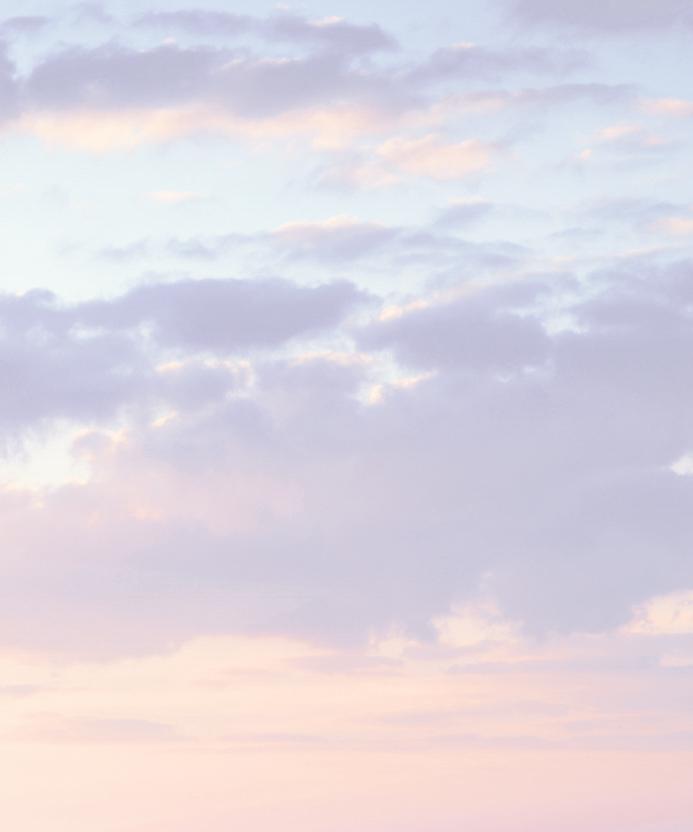
w w w.calgar ycrematorium.com
If friends so desire, memorial tributes may be made directly to a charity of your choice that supports the well-being of children, especially those who are disadvantaged
ANNOUNCEMENT
Al-Anon Are you concerned about or affec ted by someone else’s drinking? For more information or to speak with someone from our fellowship, please call 250-878-2448 or 250-342-8392

Steamboat Mountain Music Festival is seeking interesting items for our Festival Silent




Auc tion Festival is July 7-8-9
Please contac t our Sponsorship Committee at 250-347-6833
Narcotics Anonymous
Open Meeting
Mondays 7 p m at the BC Ser vice Building, South End. 624-4th St Invermere
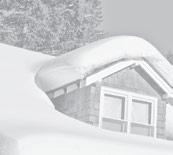
June 22, 2023 The Columbia Valley Pioneer • 23 Please recycle this newspaper
In loving memory of Owen Barry Whiting
September 30, 1936 - June 11, 2023
The family of Barr y Whiting is sad to announce his passing on June 11, 2023
Owen Barrington Whiting was born in Tunbridge Wells, Kent, UK in the fall of 1936. He emigrated to Canada in 1946 as par t of the Child Migrant program, work ing at the Fairbridge Farm near Duncan until his teens, A shor t stint as a Jeep mechanic in the army cadets brought him to the streets of Vancouver where he wandered into the BC Forestr y office Being able to identify 5 different tree types he was quick ly hired and whisked off to the wilderness of Aler t Bay BC. There he enjoyed visiting all the logging camps throughout the Nimpk ish Valley and Knight Inlets He met the love of his life, Joanna, and they promptly had 3 children. Work dried up as the camps closed, so Barr y and his family moved to California and sunnier climates Work ing for Disney Corp, he found he had an ar tistic talent for drawing, but movie backdrop painting and ar tist assembly line productions were not his for te He then found work as a commercial painter completing track houses in the hills above Santa Barbra In 1963, Barr y and Joanna welcomed their 4th child, Angella, to the flock Shor tly after this, the family was left with a tough decision, to move to Australia, or back to Canada Having found a 20 Acre farm for sale in the East Kootenays of BC, they quick ly packed all their belongings and drove nor th to Spillimacheen.
City dwellers had a lot to learn about farming in the countr y with hot summers and harsh winters Barr y and Joanna stayed on for over 40 years
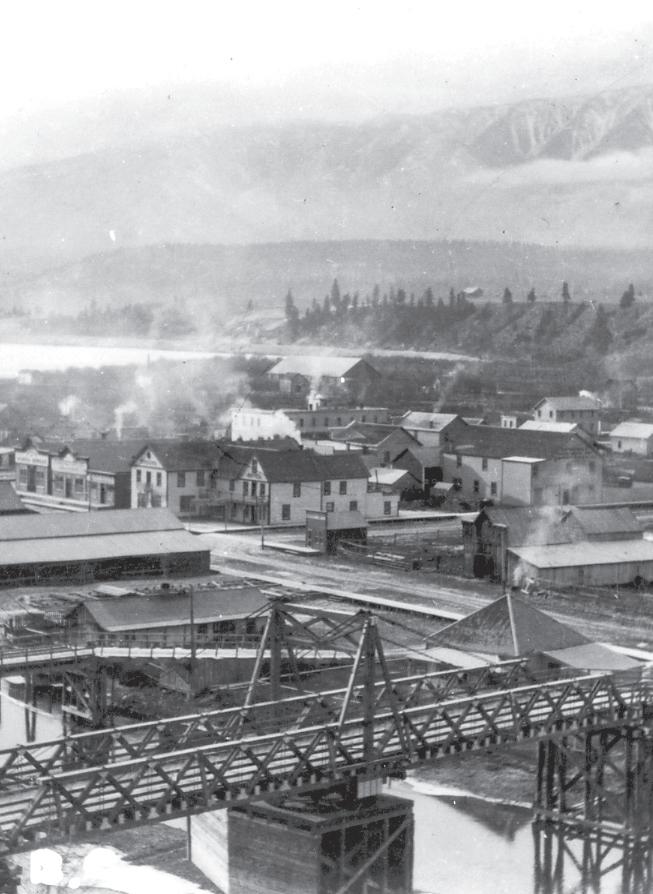
Many people passed through their k itchen door over those years, all were welcome, provided that they had stories to tell Some carried on down the road, but many stayed in the valley
From the late 60s, Barr y worked at various seasonal jobs in the wilderness of the Columbia Valley until finally settling down as a lead painter in Kootenay National Park During his winter evenings, he would continue to draw and sell his works through various galleries and venues His pen and inks hang in many valley homes as well as around the world Loving nature to his core, Barr y became an advocate and cofounder of the Friends of the Columbia Wetlands, where he gave hundreds of presentations to children, elders, and tourists on the many species of mammals and over 260 species of birds that live throughout the Columbia Valley His work was appreciated through the award of the Living Lakes commendation in 2004.
Barr y also enjoyed his old cars Having co-founded the Columbia Valley Show and Shine, it is now going into its 30+ year running at Radium Hot Springs
Moving to Sooke BC in 2007, Barr y and Joanna quick ly joined the small community and became integral par ts of the ar tisans and Fall fairs
Alcoholics Anonymous If alcohol is causing problems or con�ic t in your life, AA can help.
All meetings are at 7 p m Columbia United AA, Invermere:


Saturday, Sunday, Tuesday and Wednesday at the BC Ser vice Building, South End – 624 4th St , Invermere Please call 250342-2424 for more information or to speak with someone from our fellowship

In his final years, Barr y continued to display his ar twork and photography, offering the proceeds of the sales to local nonprofits and children’s organizations

Barr y is predeceased by his wife Joanna, and daughter Angella, and is sur vived by children, Steven (Darlene) of Victoria, Patricia(Larr y) of Brisco, and Peter (Olga) of Falkland His legacy continues on in his many grandchildren and great-grandchildren throughout Canada
Barr y ’s family would like to thank all his dear friends from all of the years spent in the valley and those of his “breakfast club” at Cathy ’s Corner Cafe who were there in his final years Blessings to the angels at Sunset Lodge in Esquimalt for their care

A celebration of Barr y ’s life is planned for the fall
Renovations, Masonr y & Handyman Ser vices, Blinds & Install. Cabin Checks/ yard care/ eavestrough cleaning/ dump runs.
THE HEARTFELT COMPANION: Ser vices for Seniors
Since 2014 we've provided kind and compassionate non-medical care, transpor tation to Cranbrook, overnight care, meal prep, grocer y shopping and more Excellent local references 250-341-5683
Hear tfeltcompanionser vices com
1 Oak crib and mattress $50.00
1 Toddler oak bed and mattress $50 00 Phone 250-342-0153 or 403-281-4131
Fir and Pine Available Call 250-342-6068

I

Cheers to Anthony for your kindness! You stopped to help me as I took cover behind a hydro pole as a recent, or soon to be, new momma deer repeatedly charged towards me She was just being protec tive but I had no exit- Cheers to you for being that exit
Cheers to R icky M for dropping into the office and giving me some homemade jam It is delicious! You are such a kind person
Cheers to A zimuth Photo and D esign for the great photos you took at the U13 Provincials They are fantastic!
retirement package after 9 months Email a complete resume with references to ben@bcland com




24 • e Columbia Valley Pioneer June 22, 2023 Don’t Miss an Issue! Read us online: N E WS P A P E R www.columbiavalleypioneer.com Please email classi ed ads to info@columbiavalleypioneer.com We’re looking for hardworking, energetic and reliable people just like you! CASHIERS/PRODUCE CLERKS POSITIONS AVAILABLE No previous experience required Days/Nights/Weekends Apply in person. 471 Arrow Road, Invermere, B.C. Natural local beef, free of antibiotics and hormones. Government inspec ted, locally processed Quar ters, Halves or Whole Beef now available Call John Zehnder 250-688-0713 2004 SVFARA SV609 20" Wakeboat, easy to launch trailer, seats 8, 320HP MerCruiser 350 direc t drive with 100 hours, Great condition $25,000 Call 403- 803-4488 Fairmont Communit y Garage Sale Saturday, June 24th 9am-3pm Drive around the Fairmont neighborhood and look for a balloon in the driveway! Local businesses par taking as well! Make the most of your day enjoying our neighborhood with shopping, dining and playing! RGM Holding is a fast pace company in the forestr y sec tor. We currently have an opening for a Skidder Operator in the Invermere and Golden areas Experience is an asset, will train the right candidate Bene�ts after 3 months,
Rockies West Realty Independently owned and operated WHY LIST WITH GERRY? ✔ Website/Social Media ✔ 3D Tour, YouTube, Drone ✔ Responsive, Local, Expert LIST WITH GERRY: FOR RESULTS!
intended to solicit those already working with an agent. BUYING OR SELLING CALL 250-341-1202 gerrytaft.ca Personal Real Estate Corporation
*Not
LISTINGS NEEDED!
WA NT TO SELL YOUR HOUSE!
2 5 to 3 4 acre parcels Great mountain views, privac y, individual wells, no building time commitment Located on sunny side of the Valley Star ting at $299,000 + GST For more information contac t Elkhorn Ranches 250-342-1268 w w w elkhornranches com N OW H I R I N G Part-Time and Full-Time Grounds Staff Apply to terravistagm@gmail.com BUSINESS SERVICES CHEERS WITHOUT TEARS ACREAGE FOR SALE HELP WANTED BOATS FOR SALE - MISC CHEERS WITHOUT TEARS FOR SALE - MISC GARAGE SALES HELP WANTED ANNOUNCEMENT FIREWOOD
A Day in the Life
Mother of six can’t get enough of them
By Lyonel Doherty lyonel@columbiavalleypioneer.com
For Joanne Gray, six was enough, but in hindsight she would have kept going, and going, and going.
Having kids, that is.
“I love children. Everyone’s children!” she told the Pioneer during a break in her schedule that used to look like the Pentagon’s.
Her mother had eight children, so it probably rubbed off on Joanne who gave birth to Tayton (14), Dylan (16), Zoe (18), Jax (20), Cassidy (22) and Brody (24). That’s a lot of logistical juggling, not to mention a lot of mouths to feed.

“Growing up in a large family I was used to organized chaos – it was my comfort zone, she said, emphasizing they simply had to make ends meet.
As for the numbers: “I was waiting for the ‘I am done’ feeling - it never came. We (Rob and I) had four and I didn’t feel this feeling so we had two more.”
They finally realized they had to stop sooner or later, and that milestone was reached with Tayton.
“My mom (Joanie) passed away when my youngest was born. In fact, I brought Tayton home from the hospital the day of my mom’s funeral in Ontario . . . I truly believe that Tayton was my mom’s last gift
[to us].”

Joanne wasn’t able to be there in her mother’s final days, but she tried her darndest. A friend offered to fly her there in a private plane but she would need an amazing medical team to accompany her, which wasn’t feasible.
“My husband came home and asked me a very simple question when I was in a state of desperation and depression: ‘What would Joanie do?’ I looked at him and said, ‘I’m not going,’ to which he replied, ‘No, you are not.’”
Then they both cried.
Joanne went into labour the day of her mother’s wake, and that night Tayton Perry Gray was born.
Raised in Toronto, Joanne grew up loving figure skating with her younger sister. She later attended university and was on the varsity rowing team before graduating from business school in 1992.
That year she started working for Hockey Canada in communications, organizing events such as the Women’s World Hockey Championships. She went on to the 1998 Winter Olympics in Nagano, Japan as the communications lead for the women’s team.
She married Rob in 1996, but if it wasn’t for her sister, that storybook romance may never have taken off.
She and Rob were on the student
council together in business school. One day she expressed her opinion on one of his “dollars and sense” presentations.
“I didn’t like it. We got to chatting and ended up on a date the night of a finance exam. He took me to a scary movie and I ended up failing my exam.”
Joanne admitted she was not looking for a relationship at the time because she wanted to focus on business. The day after their school formal, he called her to go out for brunch, but she told him she had already made breakfast and couldn’t go.
“My sister heard this and threw out my eggs and told me to get back on that phone. I did, and we (Rob and I) spent the entire day together.”
Fast forward to Brody’s birth in 1998 and Cassidy’s in 2001.
Joanne was supposed to be part of the Olympic crew for Hockey Canada in Salt Lake but turned down that position to embrace motherhood.
When asked how she managed to raise six children, Joanne said she didn’t give the task much thought; she just did it, with lots of help from Rob, an investment executive at Scotiabank. This was definitely one team that had to work together.
She kept her sanity all these years by her physical workout regime and finding time for the outdoors; skiing and rowing

are her passion.
The toughest part?
“I wouldn’t say it’s tough . . . I have told my kids I love them since the day they were born. Just when you don’t think you could love them any deeper, they continue to grow up and you do!”
Joanne and Rob have instilled three things in their children: Treat people the way you want to be treated, find ways in your day to make people’s day better, not worse; and always be humble and kind.
But how does one afford to feed six kids?
Well, there was mention that she has a crockpot filled with chili on the back of her SUV. Really?
She laughed, saying it’s true. How else are you going to feed all these mouths during sporting events? Hey, you gotta have some ingenuity.
“Some of my kids’ friends would join in the meal too – it was awesome!”
A typical day in the life
Get up at 6:30. Make lunches if that wasn’t done the night before. Fortunately the kids would make their own breakfast at 7 a.m. Forty-five minutes later an alarm would go off, signaling to get the car. At 8 a.m. the task begun by dropping everyone off at their respective schools.
26 • The Columbia Valley Pioneer June 22, 2023
Continued on page 27
Introducing the Gray family - all eight of them. From left are Rob, Tayton, Cassidy, Jax, Zoe, Dylan, Brody, and mom Joanne. Taking care of six children is a challenge but a labour of love!
Photo submitted
Crockpot on back of SUV handy for mom
Continued from page 26

Later, Joanne would walk the dogs and do some volunteer work before preparing after-school snacks and dinner. The kids were heavily involved in sports, so many times they wouldn’t get home until 8 or 9 p.m.
Surely, there must be some infighting in a family of six.
“They had to get along. We were a team. We had to be running on all cylinders to make it all work. They did and often stepped up way beyond my expectations.”
One of the most difficult things for Joanne was to have a business degree and not continue to stimulate her mind and feel that business acumen and sense of accomplishment.

“Fortunately for me, my husband constantly reminded me that the job of being a mom was the most important one in our household.”
While some parents can’t wait to have an empty house, that’s one of Joanne’s biggest fears.
“I don’t escape; I don’t need to. You have to embrace being a mom because before you know it, they will be at the stage
of complete independence and you will only be fortunate enough to visit them in their world.”
No playing favourites
Her children tease her about that. “If they want to get a rise out of me they start with this. I have always told them that in our house there is no comparing. Not one is better than the other . . . the outside world tries to compare and contrast them. I don’t.”
In the Gray household, sorry means something. It’s not an overused word like it is in society.
And when the kids brought home their tests or school work that needed to be signed, she would create a line for their signature and told them to sign it first before she did.
Fondest memories?
Watching the children grow into confident young adults who could do anything they desired. They have always inspired Joanne to be a better mom.
Would she change anything?
“Believe it or not, I would take more pictures. I would journal more and work at being more present. Ditch the phone and computer and be more present.”
June 22, 2023 The Columbia Valley Pioneer • 27
From left are Zoe (Provincial Team), mom Joanne, and Cassidy (Canadian National Team).
Photo submitted
The things you didn’t know
Fresh old ideas
By Arnold Malone Pioneer Columnist
Soon we will celebrate Canada Day. Nearly onehalf of Canadians were born outside of Canada. About 60 per cent of us were born Canadians. Both groups are lucky. Compared to other places we are very advantaged.

We Canadians choose who governs us, our land is packed with resources and we have more fresh water than any other country. In fact, we have one-fifth of the world’s fresh water.
We are the second largest nation. However, if all of our lakes were removed, we would be fourth. Our many Northern islands means that we have the longest coastline of any nation at 202,080 kilometres.
We also have the world’s longest international border shared with the USA. Except the island countries, we are among the few countries with only one border.
Quebec City is the only walled-in city in North America built in the 17th century.
Our trans-Canada Highway is one of the longest unbroken highways in the world.
Forget Christopher Columbus. Leif Erickson was collecting berries in Newfoundland to make wine to take back to Iceland in about 1000 AD.
While Canada has two official languages, our Northern Territories have 11.
Canadians are responsible for a number of surprising inventions. The baseball glove was first made in Canada in 1883, Superman is a Canadian creation by Joe Shuster, Hawaiian pizza was invented in Ontario, Ginger Ale was invented in Toronto (Canada Dry), Ginger beef comes from Calgary, California Rolls were invented in Vancouver, and peanut butter was invented in Montreal. Not surprising, Canada invented the snowmobile and the snowblower.
Our coldest recorded temperature was –63 C or —81F at Snag, Yukon.
Winnie-the-Pooh got her name from a black bear from Winnipeg – named Winnie – who lived at a zoo in London.
We have Saskatoon berries. They don’t grow south of the 45th parallel. Americans almost always include blueberries in any list that recommends foods. Saskatoons have the same ingredients as blueberries except in higher concentrations. Theses berries have allowed our First Nations people to live in our remote northern regions. Saskatoon berry seeds require freezing temperatures prior to germination.
Our Maple Leaf has been a symbol of Canada dating back to the 18th century when it was thought of as “The Gold of the Forest” in Quebec.
We are the world’s most educated country with a literacy rate of 99 per cent and 50 per cent of our citizens have post-secondary education.
The name “Canada” comes from a native word “Kanata,” which means a village.
The first UNESCO heritage site was Wood Buffalo National Park which is the largest park in the world. We have more national parks than most other countries at 48. Thirty of our national parks are larger than many countries.
Perhaps the world’s oldest company is the Hudson Bay Company which was chartered in 1670.
Canada has one of the highest immigration rates in the world. This fact allows the richness of our diversity and we are seen as a microcosm of the planet.
Canada is more than Canada geese, beavers and moose. We are a living example for other places about how diversity can exist while having respect for each other.
We do have our quirks. We measure temperature in celsius and cook in fahrenheit. We drive in kilometres but purchase lumber in feet.
If you wish to speak ‘Canadian’ use such words as: eh, toque, igloo, tee-pee, chinook, toboggan, serviette, screech, double-double, runners, house coat, parkade, Bluenosers (Nova Scotia), Stubble Jumpers (Saskatchewan), The Peg (Winnipeg), The Patch (oil field), loonie/ toonie, chesterfield and a long list of others.
Canada is free, spacious, educated, prosperous, blessed with resources, and largely respected by other nations. We have so much to celebrate.
Happy Canada Day!
Arnold Malone served as MP for Alberta’s Battle River and Crowfoot ridings from 1974 through 1993. He retired to Invermere in 2007.

LAKE WINDERMERE ALLIANCE CHURCH
Now open for in-person ser vices. Sundays at 10:30 a.m. 326 10th Avenue, Invermere 250-342-9535 • www.lwac.ca
G L I C A N - U N I T E D
Minister: Brent Woodard
Sundays at 10:30 a.m. In-person or on zoom. For the zoom link, please visit our website ( Windermere Valley Shared Ministr y). 110 - 7th Ave. in Invermere.
V A L L E Y C H R I S T I A N A S S E M B L Y Sunday 10 a.m Worship ser vice 4814 Highway Drive, Windermere 250-342-9511 • www.valleychristianonline.com
R O M A N C A T H O L I C C H U R C H St Anthony’s, Canal Flats., Canadian Martyrs’ –Invermere, St Joseph’s – Radium
Canal Flats: Saturday, 4 p.m. Canadian Martyrs, Invermere: Saturday 5 p.m., Sunday 9 a m St Joseph, Radium: Sunday 11 a m
Father Jojo Augustine • 712 -12th Ave., Invermere 250-342-6167

S T. P E T E R’S L U T H E R A N C H U R C H
Sunday 1:30 p.m. Worship Ser vice at Valley Christian 4814 Highway Drive, Windermere lutheranstpeter@gmail com
R A D I U M C H R I S T I A N F E L L O W S H I P Sunday 10 a.m Worship service
Pastor Wayne and Linda Frater • 250-342-6633 No. 4, 7553 Main St. Radium • 250-347-9937
Service, Sunday, 10 a.m. Relief Society, 11:15 a.m
President Kendyn Mackensie • Columbia Valley Branch • 5014 Fair way, Fairmont Hot Springs 250-439-9041
CHURCH OF CHRIST (Iglesia ni Cristo) Worship Ser vice: Sunday 9 a.m., Thursday 7:45 p.m Chamber of Commerce (Lions Hall)
For inquiries: 250-688-1643 250-270-2208 or 250-688-0629
For more info about the church, you can Google online at incmedia.org or pasugo.com.ph
28 • The Columbia Valley Pioneer June 22, 2023
There is a lot about Canada that Canadians may not know about. Here, Invermere residents celebrate Canada Day in years past.
Photo by Nikki Fredrikson
Recycling questions? BC RECYCLING HOTLINE 604-732-9253 1-800-667-4321 RECYCLING COUNCIL OF B.C. MEMBER
W I N D E R M E R E V A L L E Y S H A R E D M I N I S T R Y A N
C H U R C H O F J E S U S C H R I S T O F L A T T E R - D A Y S A I N T S Worship


















































 By Steve Hubrecht steve@columbiavalleypioneer
By Steve Hubrecht steve@columbiavalleypioneer



















































































 By Steve Hubrecht steve@columbiavalleypioneer.com
By Steve Hubrecht steve@columbiavalleypioneer.com























































 By Julia Magsombol Local Journalism Initiative julia@columbiavalleypioneer.com
By Julia Magsombol Local Journalism Initiative julia@columbiavalleypioneer.com










































































































































































































































